

How to Write a Tourism Business Plan
by Bryan Reynolds | Jul 10, 2023 | Destination Marketing

Starting a tourism business can be an exciting venture, but it’s vital to have a solid business plan in place. Your business plan will serve as a blueprint for your business, outlining your goals, strategies, and financial projections. Here’s a step-by-step guide on how to write a tourism business plan.
Step 1: Executive Summary
- Start with an executive summary, which provides a snapshot of your business.
- It should include your business name, location, and a brief description of the services you offer.
- This section should also highlight your unique selling proposition – what sets your tourism business apart from the competition.
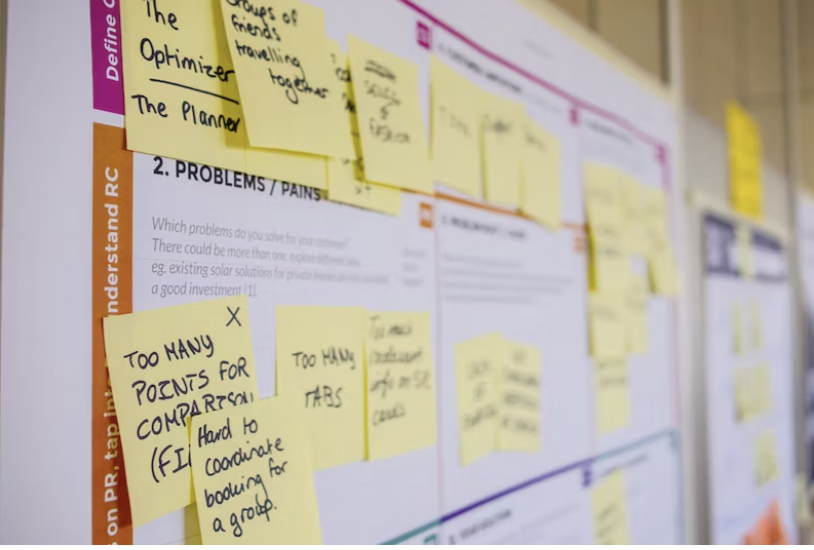
Step 2: Business Description
- Provide detailed information about your tourism business.
- Describe your target market, the types of tours or services you’ll offer, and your business structure (e.g., sole proprietorship, partnership, corporation).
- Also, discuss any partnerships with local businesses or organizations that will enhance your offerings.
Next up is the market analysis.
Step 3: Market Analysis
- This section requires research into the tourism industry in your area.
- Identify your competitors and analyze their strengths and weaknesses.
- Understand your target customers – their preferences, behaviors, and what they value in a tourism experience.
After understanding your market, it’s time to outline your organization and management structure.
Step 4: Organization and Management
Outline your team structure..
- Include the roles and responsibilities of each team member, and provide brief bios if possible.
- If you’re a sole proprietor, describe any outsourced roles (like accounting or marketing).

Step 5: Services or Products
- Detail the services or products your tourism business will offer.
- Whether you’re offering guided tours, travel planning, or other tourism-related services, make sure to describe each offering clearly.
- Explain the benefits of your services and how they meet the needs of your target market.
Finally, let’s talk numbers in your financial projections.
Step 6: Financial Projections
- This section should provide a clear picture of your business’s financial outlook.
- Include sales and revenue projections, a budget, a break-even analysis, and a projection of your cash flow.
- These figures will be crucial when seeking funding or investment for your tourism business.

Why do I need a business plan for my tourism business? A business plan helps you understand your business better, assists in securing funding, and serves as a roadmap for your business’s growth. A company overview is important in the travel and tourism industry. How long should my business plan be? The length of a business plan can vary significantly depending on the size and complexity of the business. However, typically, a business plan ranges from 20 to 50 pages. Who should write the business plan? As the successful business owner, you are the best person to write the business plan. However, you can also hire a professional business plan writer or use business plan software. How often should I update my business plan? It’s a good idea to update your business plan at least once a year or whenever significant changes occur in your business or industry. What if I’m starting a small tourism business and don’t have a team yet? That’s perfectly fine. In your organization and management section, simply focus on your role and any outsourced functions. Do I need to include all these sections in my business plan? Yes, each section plays a critical role in providing a comprehensive view of your business. However, the depth of detail in each section can vary based on your specific business. Can I use my business plan to secure funding? Absolutely. Investors and lenders will often request to see a business plan to understand the viability and potential of your business. A well-crafted business plan is crucial for the success of your tourism business. By following this guide, you’ll be well on your way to creating a comprehensive and effective business plan.
Best Practices when Writing a Tourism Business Plan Template
Writing a business plan for a tourism business involves several best practices that can increase the likelihood of your venture’s success. Here are some key points to consider:
1. Be Clear About Your Business Idea:
- Define your tourism business concept clearly.
- Specify the type of services you will provide, such as guided tours, travel planning, or accommodation booking.
2. Conduct Thorough Market Analysis:
- Identify your target audience and understand their needs and preferences.
- Analyze your competitors, their offerings, strengths, and weaknesses.
3. Create a Unique Selling Proposition (USP):
- Determine what sets your tourism business apart from competitors.
- Your USP could be unique tour packages, superior customer service, or partnerships with local businesses.
4. Detail Your Marketing Strategy:
- Develop a marketing and sales strategy to attract and retain customers.
- This could involve online advertising, social media promotion, collaborations with local businesses, or special offers for repeat customers.
5. Plan Your Operations:
- Outline how your business will operate on a day-to-day basis.
- Include details about logistics, staff requirements, equipment needed, and any regulatory compliance issues.
6. Develop a Financial Plan:
- Prepare a detailed financial plan, including revenue projections, budget, and break-even analysis.
- This section is crucial if you’re seeking investment or loans.
7. Review and Revise Regularly:
- A business plan should not be a static document. Review and update it regularly to keep it aligned with your current business situation and future goals.
Remember, your business plan is not just a document for potential investors or lenders; it’s also a roadmap for your business, guiding your decisions and strategies. By adhering to these best practices, you can create a robust business plan that sets your tourism business up for success.
- Company Updates
- Customer Spotlight
- Destination Marketing
- Digital Signage
- Employee Engagement
- Internal Communications
- New Features
- Newsletters
- Product Updates
- Touch Kiosks
- Visitor Information
Recent Posts
What are destination experiences how to boost tourist engagement and the local economy through experience booking kiosks, smart phones, smart cities, and now smart lobbies: how can hootboard interactive kiosk transform your space, from mundane to magnificent: how hootboard airx transforms visitors welcome.
- Interactive Kiosks: Going Beyond Check-Ins and Check-Outs
- What is North Star Metric and Its Importance?
- Knowledge Base
- Setup a Demo
- Privacy Policy
- Terms of Use
Related Posts

by Mannat Sharma | Destination Marketing
Travelers crave immersive experiences that connect them with the local culture, history, and community. Whether it's a...

The rise of smart technologies—smartphones, smart cities—has revolutionized the way we live, work, and interact. The...
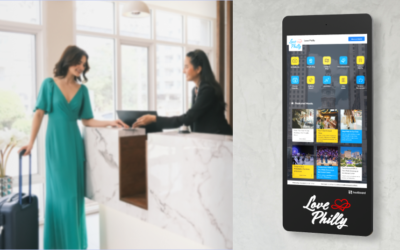
From the moment we step into a new environment, a silent dialogue begins. Whether it's a grand hotel lobby, a bustling...
Thank you! Your Download Should Begin Automatically.
Email Address
Organisation
Phone Number
Industry Industry Travel & Tourism Smart City Education Workplaces Industry Agnostic Others
How to create a tour operator business plan in 8 steps
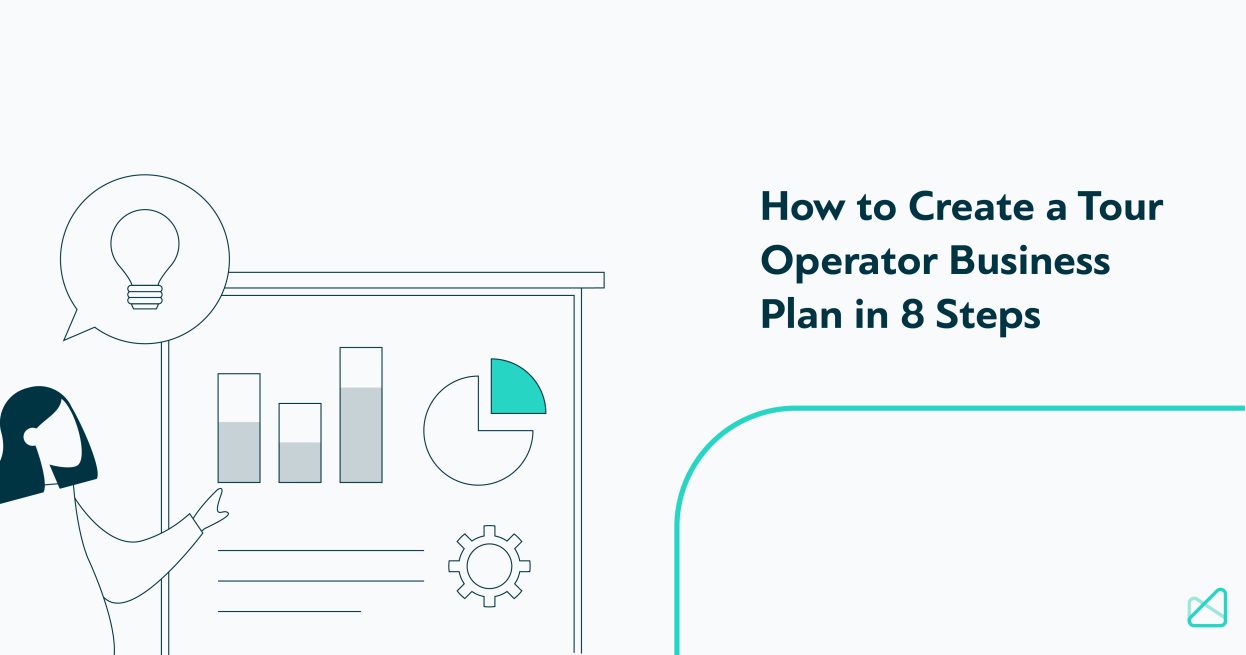
Preparing to Write a Business Plan
Tour operator business plan template, tips and tricks for a strong tour operator business plan.
Wondering how to turn your tour operator idea into a real business? The first step to launching a startup and getting investors onboard is to develop a formal proposal called a business plan . Whether you want to start a travel agency, a walking tour company, or an adventure travel business, you will use a business plan to communicate exactly how you plan to make your idea come to life.
Creating a tourism business plan might sound daunting; in this article, we’ll show you how to do one and offer lots of advice for first-time founders. You’ll be able to use this article as a tour operator business plan template to write your own sample business plan (as an exercise) or to create the real thing.
To more clearly illustrate how to create a tour operator business plan, we’ll use a sample business as we go through each section. Our sample business is a small tour operator startup that specializes in ecotourism in Thailand.
Before you start to create your official business plan, it can be helpful to think through several aspects of your business so that you are fully prepared to address each topic in the business plan template. One excellent preparation exercise is to complete a Business Model Canvas for your company.
The Business Model Canvas encourages you to think critically about your customers, cost structure, revenue streams, marketing strategy, and more. It’s the perfect warm-up for your business plan because you’ll incorporate your Business Model Canvas notes into the actual business plan document. We recommend that you do this exercise with your co-founders, if you have any, and with a whiteboard – you’ll probably make lots of changes as you go!
You can find a printable Business Model Canvas template here .
Your tour operator business plan should contain at least seven sections: an executive summary, a company overview, a description of your services, an analysis of your market, an implementation plan, a team summary, and a financial plan. You might have one or more appendices at the end, if you have additional relevant information to include. The finished product should be formatted nicely and incorporate your company’s logo and branding.
Executive Summary
As the first component of your business plan, the executive summary is arguably the most important section. If you’re pitching your idea to investors, they’re likely very busy people, so you want to grab their attention from the beginning. The executive summary should contain a concise outline of your tour operator company’s objectives and goals, your mission and/or vision statements , your key success factors, and a clear description of your value proposition.
Company Overview
Think of this section as what you would post on the “About” section of your tour operator company’s website. The company overview should explain who your company’s key leaders are, how and when the business started, what the ownership structure looks like (if you have investors, for example), where your office is located, and an outline of your current assets and debts. If you’re in the early stages of your business, this section might be quite short.
Operations Plan
The operations plan is where you describe exactly what your company will offer. What kinds of tours will you sell? Where exactly will you operate? This is the type of information you would list on your website for potential customers or guests to read – but without too much of a sales pitch.
In this section, it can also be helpful to include a description of the full “ life cycle ” of your business. What happens before, during, and after a tour? What steps does the guest complete, and what happens behind the scenes at your company’s office?
Thinking about our Thai ecotourism company, we might illustrate how someone could book a tour perhaps six months in advance on our website. Between booking and arrival, we coordinate accommodation, meals, and transportation with partner providers. When the tour concludes, we offer transportation back to the airport and follow up with a special offer to book another tour with us at a discount.
Market Analysis
This section explores your specific niche within the tourism industry and the geographic location(s) where you plan to operate. Who are your target clients or guests? Who are your main competitors? What trends exist in this facet of the industry? Is the amount of visitors to your location increasing or decreasing?
Try to include statistics from reputable sources whenever you can. Destination marketing organizations, tourism bureaus, and air traffic data, just to name a few, can provide valuable insight and add credibility. This section should leave no stone unturned so that your reader can truly understand your market conditions.
In our ecotourism business in Thailand, for example, we would include information about travel trends in Thailand (like the most popular feeder markets), new air routes, economic trends, the number of new hotels being built, etc. We would also explore the ecotourism market; are more people choosing eco-friendly travel options today compared to five years ago? What companies are the current ecotourism market leaders globally and in Thailand?
Implementation
Now that you’ve explained your business idea and described the market in which you plan to operate, it’s time to outline exactly how you will bring your tour operator business to life. This section should include a SWOT analysis , details about your marketing and pricing strategies, and a sales projection.
In the SWOT analysis , you will explore your company’s strengths, weaknesses, opportunities, and threats. What does your company offer that nobody else in the market does? What are some potential challenges that you will need to face? Using our ecotourism company example, a threat could be natural disasters – if there are floods or mudslides, our business cannot operate. On the other hand, an opportunity is that more people are interested in eco-friendly travel options.
Your marketing and pricing strategies should be very specific. How will customers find your company? Which online channels will you use? Will you work through travel agents or directly with your customers?
Your pricing strategy should include the exact rates you plan to charge for at least a year in advance. For example, our ecotourism company in Thailand might charge $699 for a package during low season, $899 during high season, and $999 over holiday periods, with rates increasing 5% each year.
We might also offer a 10% discount for advance purchase bookings made at least 6 months in advance and charge a 50% cancellation fee for any reservations cancelled within 3 months of the tour departure date. Based on your pricing strategy, you can create a sales projection that will estimate your company’s sales performance, preferably over the next three years.
Team Summary
After your reader understands what your tour operator business will do, they’ll wonder who is going to make it happen. And if you’re planning to launch a full-fledged tour operator business, you’re probably not going at it alone. The Team Summary section should include a thorough plan for your company’s organizational structure, key leaders, employees, and training processes.
Do you already have a management team in place, or will you need to hire additional leaders? How many employees will you need, and how much will you pay them? And how will you train and develop your employees? The Team Summary should answer all of these questions and provide enough information for potential investors to understand exactly how you plan to staff your business, pay your employees, and ensure all team members are trained properly.
Financial Plan
The financial plan is extremely important to potential investors because they will want to maximize the return on their investment. Your financial plan is essentially a projection of your revenue streams and cost structure for your company’s first five or so years of operation. It will include not only revenue from ticket sales and costs from employee salaries, but also details like tour-operator software costs, insurance, taxes, marketing spend, depreciation of assets, interest on loans, and more.
If you don’t have a finance background yourself, it may be helpful to seek assistance from an accountant or someone who knows the ins and outs of financial modeling.
Additional Information
In an appendix, you can include supporting information or statistics that may be helpful for potential investors, but not essential to your business plan. For instance, you could include a full report on air traffic trends that you used in your Market Analysis section.
Download Your Tour Operator Business Plan Template
Now that you know what a Tour Operator Business Plan should include, below we provide the one we have specially created for you.
Writing a business plan is certainly not an easy task. It’s time consuming and requires a lot of thought, but a well written business plan can lead to significant growth for your company. As you complete your business plan, keep these pieces of advice in mind:
- Conduct thorough research on your market . When you pitch your company to investors, you want to be seen as an expert, so learn as much as you can about your competitors and market trends.
- Simplify your words and descriptions whenever possible . A business plan is not the place to wow your reader with flowery language – instead, you want your reader to easily grasp your value proposition. Think about writing so that a fifth-grader can understand it. The last thing you want is for your reader to be confused about what your company actually does.
- Don’t be afraid to make changes . As you work on your business plan, you might discover that some aspects of your business need to be adjusted for the greater good of the company. After all, the companies that are the most adaptable are the ones that survive!
- Get a second opinion (or a third or a fourth). A good test of your business plan’s readability and clarity is to let someone outside your industry read it, like a family member or friend. If they have a lot of questions, you might need to adjust your descriptions or more clearly explain your plans.
- Proofread ! Your business plan is a reflection of your company’s values. If your formatting is sloppy and your text is full of typos, your reader might question whether you have the attention to detail necessary to run a successful business.
Now that you have all the tools to create a great tour operator business plan, it’s time to get to work!
Subscribe to our newsletter
Yay you are now subscribed to our newsletter.
Adrienne Fors is the founder of Strategic Stays, a consultancy specializing in tech solutions and copywriting for short-term rental businesses and boutique hotels. She was previously a Market Manager at Expedia, and she graduated from the School of Hotel Administration at Cornell University. Adrienne is originally from Minneapolis, Minnesota and enjoys traveling and playing tennis.
Mize is the leading hotel booking optimization solution in the world. With over 170 partners using our fintech products, Mize creates new extra profit for the hotel booking industry using its fully automated proprietary technology and has generated hundreds of millions of dollars in revenue across its suite of products for its partners. Mize was founded in 2016 with its headquarters in Tel Aviv and offices worldwide.
Related Posts
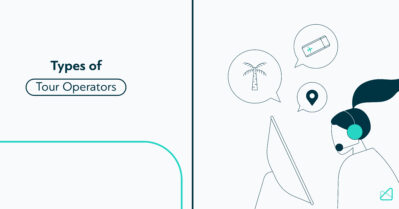
The 16 Types of Tour Operators That Keep Curated Travel Alive
29 min. Tour operators act as creators of unique and unforgettable travel experiences. They use their expertise and connections to arrange the best and most affordable transportation, accommodation, and activities. Today’s travelers are lucky to have them, and so is the industry as a whole. If you are in the travel business and you’re trying […]
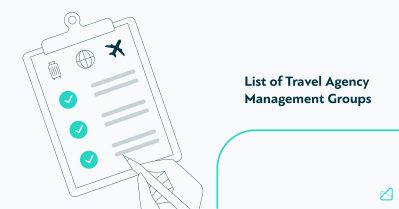
List of 32 travel agency management groups
6 min. Whether you are thinking of moving into the travel industry or you already own a business in this sector, the concept of travel agency management groups is a task worthy of analysis and study. Defining an effective business model for your retail travel agency is one of the key factors in optimizing sales […]

Ultimate Guide to Understanding the Benefits of a Travel Management Company
12 min. Managing and operating modern businesses often encompasses corporate travel. However, managing business travel is complex, especially with limited experience and resources. You must ensure that everything goes smoothly for the travelers while staying on top of the logistics and expenses. That’s why many organizations decide to outsource their travel management to a dependable […]
- English (UK)
- English (CA)
- Deutsch (DE)
- Deutsch (CH)
Business tourism 101: All you need to know
What is business tourism.
- To participate in internal meetings at different office locations
- To meet business partners (clients or suppliers)
- To go to conferences, exhibitions, trade shows, and other local or international business events
- To take part in company retreats or incentive trips
Why is business tourism important?
- Better understand common goals, needs, and challenges
- Work together more efficiently
- Easily share knowledge and ideas
- Achieve important breakthroughs and solve problems faster
?)
See how to save money on business travel
What are the different types of business tourism, traditional business traveling, incentive trips, conference and exhibitions, how has business tourism evolved over the years.
?)
Make business travel simpler. Forever.
- See our platform in action . Trusted by thousands of companies worldwide, TravelPerk makes business travel simpler to manage with more flexibility, full control of spending with easy reporting, and options to offset your carbon footprint.
- Find hundreds of resources on all things business travel, from tips on traveling more sustainably, to advice on setting up a business travel policy, and managing your expenses. Our latest e-books and blog posts have you covered.
- Never miss another update. Stay in touch with us on social for the latest product releases, upcoming events, and articles fresh off the press.
?)
A quick guide to understanding business travel analytics
?)
TravelPerk and American Airlines Provide Modern Booking Capabilities Through NDC
?)
TravelPerk’s Post-Pandemic Office Design
- Business Travel Management
- Offset Carbon Footprint
- Flexible travel
- Travelperk Sustainability Policy
- Corporate Travel Resources
- Corporate Travel Glossary
- For Travel Managers
- For Finance Teams
- For Travelers
- Thoughts from TravelPerk
- Careers Hiring
- User Reviews
- Integrations
- Privacy Center
- Help Center
- Privacy Policy
- Cookies Policy
- Modern Slavery Act | Statement
- Supplier Code of Conduct
- Purchase History

Tourism Business Plan Templates
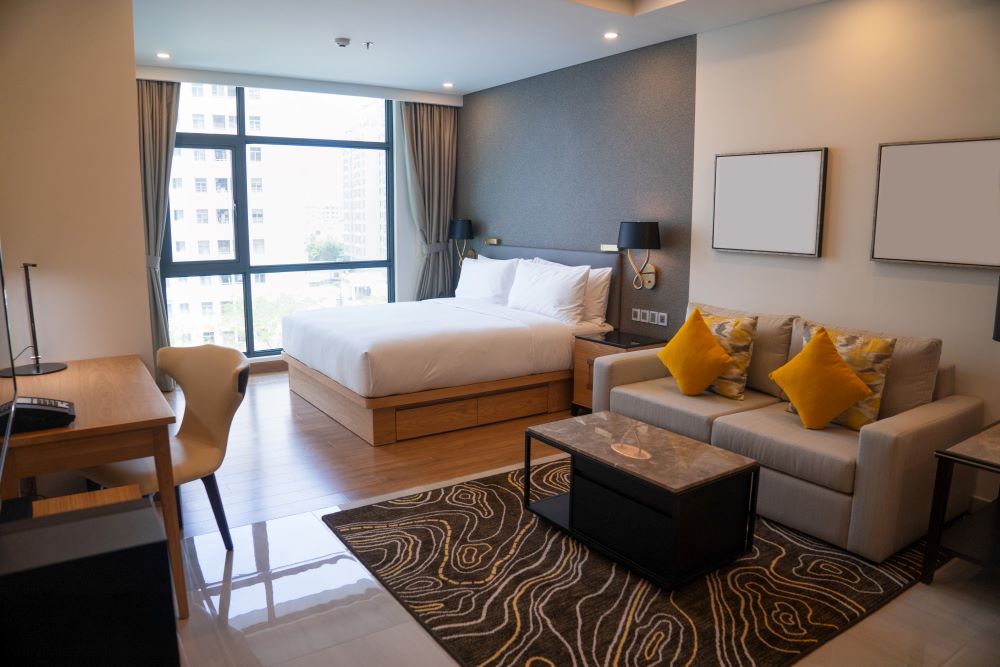
Choose your Tourism business plan template from the list below:
- Hotel Business Plan Template
- Bed and Breakfast Business Plan Template
- Travel Agency Business Plan Template
At Business and Plans, we offer a wide range of Tourism business plan templates to cater to your specific needs. Whether you are starting a Hotel, Bed and Breakfast, or Travel Agency, we’ve got you covered. Our professionally designed templates will save you time and ensure your business is set up for success. Browse through our selection below and choose the perfect template to kickstart your journey in the booming tourism industry.
Welcome to Your Gateway for Success in Tourism Business!
Unlock the Potential of Your Hospitality Venture with Our Expertly Crafted Tourism Business Plan Templates.
Are you ready to elevate your hotel, bed and breakfast, or travel agency to new heights of success? At Business & Plans, we understand the unique challenges and opportunities that the tourism industry presents. That’s why we’ve curated a collection of comprehensive and professionally designed tourism business plan templates to guide you on your journey to prosperity.
Why Invest in a Tourism Business Plan?
1. strategic roadmap:.
Our meticulously crafted templates serve as your strategic roadmap, helping you navigate the competitive landscape of the tourism industry. Whether you’re starting a new venture or looking to revitalize your existing business, a solid business plan is your foundation for success.
2. Investor Confidence:
Attracting investors is a key step in expanding your tourism business. A well-structured business plan not only demonstrates your commitment but also instills confidence in potential investors. Showcase your vision, market analysis, and financial projections with our templates to secure the support you need.
3. Operational Efficiency:
Efficient operations are crucial in the tourism sector. Our business plan templates guide you through operational strategies, from optimizing booking processes to enhancing customer service, ensuring that your business runs smoothly and exceeds customer expectations.
Why Choose Our Templates?
- Expertly Crafted: Our templates are created by industry experts with years of experience in the tourism sector.
- Customizable: Tailor each template to suit the unique aspects of your business, ensuring a personalized approach.
- Comprehensive Guidance: Step-by-step guidance to help you fill in every section of the business plan with confidence.
- Up-to-Date Insights: Benefit from the latest trends and insights in the tourism industry to stay ahead of the competition.
Invest in the success of your tourism business today! Browse our collection of business plan templates and take the first step toward achieving your business goals. At Business & Plans, we’re committed to your success in the dynamic world of tourism.
BUSINESS STRATEGIES
How to start a travel business in 7 steps
- Rachel Bistricer
Get started by: Creating a website → | Getting a domain →

If you're passionate about providing exceptional travel experiences and managing a range of services, starting a travel business could be an exciting venture for you. This guide will walk you through the steps of initiating and operating a successful travel business, including the advantages and challenges involved in starting a business , how to go about creating a business website and how to generate revenue in the travel industry.
What is a travel business?
A travel business is a service-oriented business that offers a variety of travel-related accommodations, amenities and services to clients. Travel businesses typically provide services such as:
Trip planning and reservations
Transportation services, including flights, car rentals and transfers
Accommodations, such as hotels, resorts and vacation rentals
Tour packages and guided experiences
Travel insurance and assistance services
Why start a travel business?
The travel industry outlook shows healthy growth ahead, with projections estimating it will see a compound annual growth rate of 3.47% globally through 2028 . This points to promising opportunities if you're considering launching a travel business. With travelers spending billions annually on accommodations, transportation, and related services, the travel sector drives substantial revenue. And as people increasingly seek personalized, one-of-a-kind travel experiences tailored to their preferences, demand is rising for travel companies that can deliver on this. By understanding what today's travelers are looking for and offering customized services that help create meaningful trips and memories, you can position a new travel business for success amid the industry's continued expansion. Tracking trends and honing in on underserved niches can help you capitalize on the sector's upward trajectory.
Decide on a travel business niche
Create a business plan
Select a business structure
Obtain business financing or capital
Set up accounting and bookkeeping services
Source specific travel equipment
Register your travel business
01. Decide on a travel business niche
By focusing on a specific market segment, such as adventure travel, family-oriented vacations, luxury travel, wellness retreats or sustainable tourism, you can craft tailored offerings that cater to the unique preferences of travelers within that niche. Specializing allows you to differentiate your services, position yourself as an expert in the chosen area and effectively target people seeking those particular travel experiences.
02. Create a business plan
Develop a comprehensive business plan that covers key aspects of your business planning
including identifying your target market, summarizing your executive strategy, implementing a marketing strategy and projecting your financials. This plan serves as a roadmap for your business and aids in conveying your vision to potential investors when seeking funding. It should also include other important business information such as the type of business you plan to start and your choice of a business name .
Here’s a travel business plan template to get you started:
Travel business plan template
Executive Summary
Business Name: [Your Travel Business Name]
Business Structure: [Sole Proprietorship/Partnership/LLC/Corporation]
Location: [City, State]
Founding Date: [Month, Year]
Founders/Owners: [Names]
Mission Statement: [Concise statement of the business’s purpose]
Business Description
Overview: Briefly describe your travel business, including key features, services and amenities.
Unique Selling Proposition (USP): Clearly define what sets your travel business apart from competitors.
Target Market: Identify your primary customer demographic and market segment.
Services and Amenities
List and describe the travel services and amenities your business will offer.
Include trip planning, transportation, accommodations, tour packages, etc.
Market Analysis
Industry Overview: Provide an overview of the travel industry, including trends and growth projections.
Competitor Analysis: Identify key competitors and analyze their strengths and weaknesses.
Target Audience: Define your target customer profile and their preferences.
Marketing and Sales Strategy
Marketing Plan: Outline your strategies for promoting the travel business, including online and offline channels.
Pricing Strategy: Detail your pricing structure and any promotional pricing.
Sales Tactics: Describe how you will attract clients and increase bookings.
Operational Plan
Location and Facilities: Describe the physical location and facilities of your travel business.
Suppliers: List and describe key suppliers for travel-related services.
Staffing: Outline your staffing plan, including roles and responsibilities.
Financial Plan
Startup Costs: Detail initial investment requirements and startup expenses.
Revenue Projections: Provide realistic revenue projections for the first 3-5 years.
Operating Costs: Outline ongoing operating expenses, including marketing, staff salaries and technology.
Funding Proposal
Purpose of Funding: Clearly state how the funds will be utilized.
Amount Needed: Specify the amount of funding required.
Repayment Plan: Outline the proposed repayment plan for loans or investments.
Risk Analysis
Identify potential risks and challenges that may impact the success of your travel business.
Develop strategies to mitigate and manage these risks.
Include any additional documents or information relevant to your business plan.
Examples: Market research data, resumes of key team members, mock-ups of marketing materials.
Summarize the key points of your business plan and highlight the potential success of your travel business.
Conclude with a call to action or next steps.
Note: This template serves as a general guide. Adjust and expand sections based on your specific business model and goals.
03. Select a business structure
When starting your travel business, consider the business entity or structure that makes the most aligns with your business goals. Common options like sole proprietorship , partnership , limited liability company (LLC ) or a corporation each have their own pros and cons.

Learn more: How to start an LLC
04. Obtain business financing or capital
Starting a travel business involves substantial initial costs. You’ll need to secure considerable financing through methods like bank loans, grants, or investments from stakeholders to launch and sustain your business.
Costs that you’ll need to factor in when securing financing for your business include:
Making a website and its maintenance
Marketing and advertising campaigns
Trip planning software and tools
Reservation systems and travel management software
Staff recruitment and training
Initial salaries and benefits for employees
Transportation services (e.g., vehicle fleet or partnerships with transportation providers)
Technology infrastructure (computers, servers, etc)
Licensing and permits for operating a travel business
Insurance coverage for travel-related risks
Office space and utilities
Professional services (legal, accounting, etc)
05. Set up accounting and bookkeeping systems
Establish robust accounting and bookkeeping systems from the outset to track income, expenses and ensure financial viability. This includes managing corporate tax obligations if applicable.
06. Source specific travel equipment
Acquire the necessary equipment for your travel business, ranging from technology infrastructure to reservation systems and transportation vehicles. Some more specific examples of this include:
Reservation management software
Transportation vehicles (if providing transportation services)
Communication systems (phones, email, etc.)
Office furniture and supplies
Technology infrastructure (computers, servers, etc.)
07. Register your travel business
Register your travel business in compliance with local regulations, obtain the required licenses and secure appropriate insurance coverage.

Learn more: How to register a business , How to get a business license
Tips for managing your travel business for profitability:
Once you’ve got your travel business off the ground, you’ll need to understand how to properly run and manage it in order to make sure it’s profitable. Here are some general tips on how to achieve that:
Research your industry
Gain a deep understanding of the travel industry, including market competition, target demographics and financial requirements. If you lack experience in the travel industry, consider working for an established travel agency or volunteering at a local tourism office to acquire valuable insights and experience.
Develop a marketing strategy
Craft a well-defined marketing strategy from the beginning to proactively promote your travel business. Having a user-friendly and informative travel website is essential for attracting clients and showcasing your services. You might also consider starting a travel blog - check out these travel blog names for inspiration.
Invest in customer service for your travel business
Exceptional customer service is crucial for success in the travel industry. Ensure a positive experience for clients from trip planning to their return home. Address customer inquiries promptly and professionally. To ensure your customers have a memorable trip, make yourself a reliable travel business by going beyond just booking flights and hotels. Offer assistance with every aspect of their journey, from navigating lost luggage to providing travel insurance advice. Be the dependable support they need while traveling, like having a 24/7 concierge service at their disposal.
Build partnerships for business operations
To enhance the growth of your travel business, consider establishing key partnerships with airlines, hotels, tour operators and industry stakeholders. These collaborations open doors to exclusive deals, expanding your service offerings for clients. Benefit from preferential rates, premium accommodations and tailored travel packages, enhancing the value you provide. Attend networking and industry events to connect with seasoned professionals and gain valuable insights. By fostering these partnerships and staying up to date with industry trends, you can position your travel business as an authoritative and trustworthy source for people looking to travel.
Travel businesses to inspire (all built on Wix)
The lucky traveler.
Travel expert specializing in planning All-inclusive Vacations, Comprehensive Trip Planning, Points and Miles Consultation and Destination Weddings.
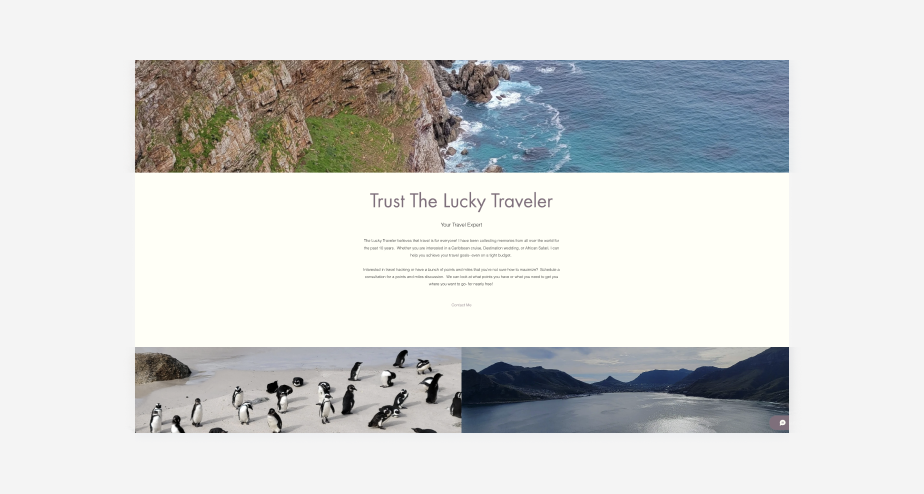
A full service travel agency with experience in planning "bucket list" vacations and navigating the travel industry.
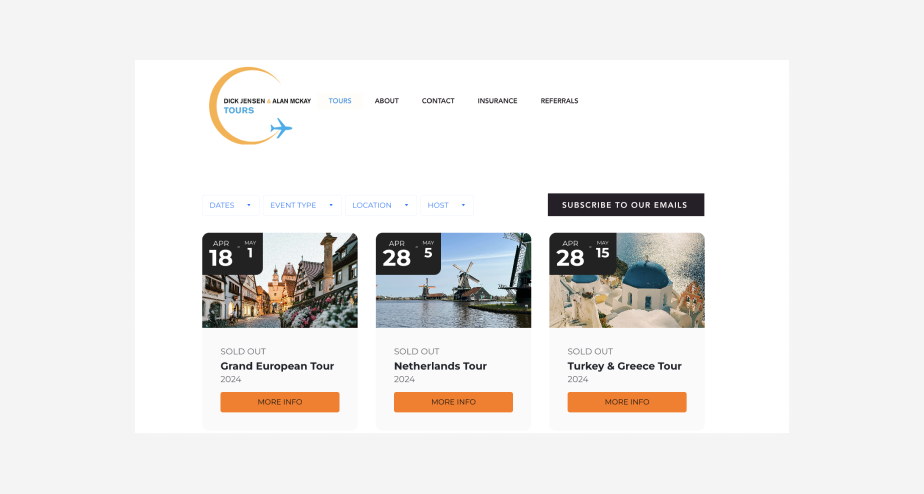
Worldwide Fun4All travel
Travel agent focusing on planning tailoring trips to clients needs and interests.

Benefits of starting a travel business:
Operating a travel business allows you to be your own boss, set your own hours and make independent decisions. The demand for travel services is consistently high, particularly in areas with a substantial tourist presence. For business owners who enjoy creating memorable experiences for clients, a travel business can be rewarding on many levels.
Challenges of running a travel business:
Running a travel business requires diverse skills in areas such as trip planning, customer service and operational management. Coordinating travel arrangements, managing client expectations and ensuring timely service delivery can be challenging. Utilizing online booking systems and scheduling software is crucial for managing these aspects effectively. Additionally, the travel industry is competitive, requiring a unique value proposition and effective marketing to stand out.
How profitable is a travel business?
The profitability of a travel business depends on factors such as location, market demand, competition, pricing strategies and operational efficiency. Providing unique and personalized travel experiences can contribute to higher profitability. Streamlining business processes, utilizing technology and building strong client relationships are key factors in achieving success in the travel industry.
Other business ideas you might be interested in
How to start an industrial design business
How to start a freelance business
How to start an art business
How to start a construction business
How to start a car detailing business
How to start a DJ business
How to start a dog walking business
How to start a catering business
How to start a real estate business
How to start a lawn care business
How to start a food truck business
How to start a landscaping business
How to start a pressure washing business
How to start a cleaning business
How to start a tutoring business
How to start a coaching business
How to start a pool cleaning business
How to start a food business
How to start a painting business
How to start a restaurant business
How to start a baking business
How to start a handyman business
How to start a marketing business
How to start a nail business
How to start a trucking business
How to start a rental property business
How to start a farming business
How to start a homecare business
How to start a flower business
How to start a car wash business
How to start a gaming business
How to start a sports card business
How to start a frozen food business
How to start a courier business
How to start a laundromat business
How to start a wedding business
Related Posts
How to start a travel blog in 2024
Creative travel business names: your passport to inspiration
How to make money as a travel agent in 13 unique ways
Was this article helpful?

Beginners Guide to Starting a Tourism Business
Your Beginners Guide to Starting a Tourism Business
Writing for WikiHow, Claire Fess provides eight steps on how to start a tourism business .
Table of Contents
Definition: Tourists are people who travel outside of their home-base environments in order to spend time visiting a different environment in either a business or leisure capacity. Both vacationers and those on business trips are considered tourists, and they may be touring either domestically (within their home country) or internationally. A tourism business is any business that centers on catering to tourists’ needs.

Step 1: Decide on which sector of tourism you would like to focus.
You have several options to choose from when it comes to establishing a business in tourism :
- Transportation service. This sector involves transporting tourists to, from and around the tourist destination.
- Travel agencies. Travel agencies are the 1-stop-shop for everything involved with visiting a place, including transportation, accommodations and attractions.
- Tour Operator. A tour operator typically combines tour and travel components to create a holiday. They prepare an itinerary.
- Destination Management Company . A DMC possesses extensive local knowledge, expertise and resources, specialising in the design and implementation of events, activities, tours, transportation and program logistics.
- Accommodation. These include hotels, guesthouses, bed and breakfasts, hostels, rental houses, lodges and any other place tourists may stay while travelling.
- Guided tours and tourist guide. A guided tour service or professional tourist guide is a tourism business that specializes in providing informative and entertaining tours through an area’s local attractions.
- Hospitality. A hospitality business pertains to any food or beverage establishment that tourists may frequent.
Step 2: Take your geographical location into account.
Your local tourist attractions are good indicators of what would and would not make a successful tourism business venture. For example, if your area is secluded from the populace and dense with wineries, then guided winery tours, local bed and breakfasts, and airport transportation services are all viable business options.
Step 3: Size up the competition.
Thoroughly research the tourism businesses in your area before you decide which business in tourism is right for you. You will want to choose a tourism sector that is not overly congested, and one that you can contribute something unique to.
Step 4: Write a business plan.
Your business plan is the blueprint for your tourism business, and should include the following sections:
- Executive summary. Describe your business’s purpose, name, location, personnel needs, tourism business management staff, market sector, competition, marketing plan and financial projections.
- Tourism business summary. This should detail how the business’s ownership will be distributed and the start up requirements (funding, assets and location).
- Products and/or services. You need to outline the products and/or services your business will be providing for tourists.
- Analysis of the market. Provide information about your target market and your competition. Tourism business strategy. Describe how you plan on running your business, marketing your business and pricing your product or service.
- Financial summary. State your projections for your business’s expenses and income.
Step 5: Procure the necessary funds.
Present your business plan to potential lenders and/or business partners in order to obtain the start up and operating capital you will need to run your business in tourism.
Step 6: Select a business location.
If you plan to operate a walk-in travel agency or an accommodation establishment, there are 3-things to consider. They are location, location, and location!
Step 7: Obtain all applicable business licenses.
Get the necessary business licensing through your local government’s business regulatory agency.
Step 8: Market your tourism business :
- Use social networking sites . Set up accounts/pages on free social networking sites such as Linked In .
- Create a website for your tourism business. Be sure to hire a specialist for search engine optimization (SEO) in order to maximize your site’s online presence. List your business on all applicable online directories and review websites.
- Advertise in print mediums. Take out ad space in newspapers, magazines and trade/lifestyle publications.
Source: www.wikihow.com/Develop-a-Tourism-Business
Read more on this topic:
- 10 Steps To Starting Your Own Tourist Transport Business
- How To Streamline Your Tour Operator Business
- 10 Tips on Selecting Tour Operator Software
- 10 Tips on Tour Quoting
- How to Keep Tour Itineraries Current
- So you want to be a tour operator?
- The Role of Tour Operators in Safari Bookings
- 13 Tips to surviving as a Small Tourism Business
- Effective Sales Secrets For Small Businesses
Tourism Tattler
Related articles.

Africa Hotel Valuation Index 2017
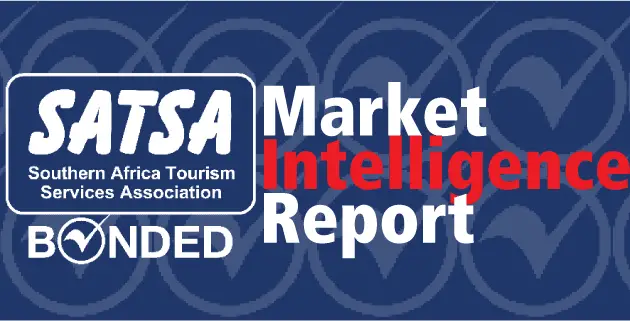
SA Tourism Stats – April

Statutory Business Requirements

Good Service Seeds Future Tourism Growth

Privacy Overview
Become a Member Enquire now
- Stay Ahead of The Industry With Pre-made Templates & Resources
- Business Planning
Business Plan (Template)
A good business plan can help your business secure finance, define the direction of your business, and create strategies to achieve your goals. A thorough and effective tourism business plan will include an executive summary, a business description, short and long term goals, business structure (legal and internal management structure), product or service description, a sales and marketing plan and financials to date. This Business Plan template steps you through the process of creating a solid, well-structured plan tailored to your business.
If you are preparing or updating your business plan for internal uses, the Business Plan template may be more than you require. The four critical documents to review and complete/update are:
Goals and Strategies
SWOT Analysis (Template)
Marketing Plan (Template)
Action Plan (Template)
Join or login for full access to member content
Subscribe to our free newsletter.
Keep up to date with all the latest news from Tourism Council WA.

To learn more about how becoming a Tourism Council WA member can elevate your business, get in touch with our friendly team.
Contact Info
+61 (08) 9416 0700
1 Resort Drive, Burswood, WA 6100
Upcoming events
- 2024 Perth Airport WA Tourism Conference
- 2024 Perth Airport WA Tourism Awards Gala Dinner
- Sample Business Plans
- Transportation, Logistics & Travel
Travel Agency Business Plan

Are you a travel enthusiast and want to establish your own travel agency?
Well, if yes, then it’s an exhilarating journey of stepping into a world brimming with adventure and discovery.
But in the midst of this excitement, it’s necessary to lay the groundwork for a successful business out of a hobby. It demands a strategic roadmap – writing a proper travel agency business plan .
So, our travel agency business plan serves as the compass that directs you through all the intricacies of the industry and helps you pay attention to every detail of the business plan.
As you delve into this step-by-step guide, you can explore how to write your own business plan that sets the stage for sustainable growth and leaves a mark on potential investors or readers.
Without further ado; let’s dive into the art of crafting your travel agency business plan.
Key Takeaways
- Create a compelling executive summary for your travel agency’s identity, vision, mission statement, and core values.
- Showcase your business goals, market opportunities, and marketing plan to attract potential investors or partners.
- Highlight the range of travel services you’ll provide, including specialized offerings that place your agency ahead of competitors.
- Give valuable insights into everyday business operations, from booking management to customer service protocols.
- Provide a detailed financial plan to illustrate a clear understanding of your travel agency’s financial health and expected growth trajectory.
- Thoroughly analyze the industry and competitive landscape to uncover the latest trends and customer preferences.
- Utilize modern and cost-effective business plan software for writing and maintaining business plans.
Why do you need a travel agency business plan?
In reality, every established or emerging business requires a well-written business plan. It is not just a document; it’s a strategic blueprint, offering you a roadmap to make informed business decisions.So, starting your travel agency business greatly benefits from having a well-thought-out business plan like any other business.
Attracting Investors
Whether you’re looking to secure a loan or attract potential investors, a detailed business plan is truly helpful. It shows your agency’s capital cost & revenue potential and summarizes the profitability for angel investors.
Strategic Direction
An actionable plan provides a comprehensive view of your travel agency’s goals, offered services, and strategic steps you will take to achieve success. Also, it indicates a thorough understanding of your target audience and top competitors.
Risk Mitigation
Drafting a professional business plan serves as a foundation for a successful business and helps you identify potential risks & challenges in the market. Through careful planning, you can create effective strategies to overcome obstacles.
Operational Guidance
A well-crafted business plan offers an internal guide that ensures your team understands and aligns with the overarching business objectives, encouraging a cohesive and immersed work environment.
Now, let’s move forward to write a successful business plan for a travel agency.
How to write a business plan for a travel agency?
1. get a business plan template.
Before you start writing a travel agency business plan, it’s highly advisable to get a business plan template first!
It’s like having a valuable toolkit for your business planning endeavors. It not only streamlines the business plan writing but also ensures that you describe all the essential sections.
It offers a structured framework that helps you organize your thoughts effectively to draft a strategically sound business document according to your specific needs and preferences.
Beyond that, a quality business plan template lays the foundation for a comprehensive, professional business plan that highlights your business idea and vision to attract potential investors.
If you’re in search of a polished template, consider Upmetrics’ sample business plan template and ensure that you won’t overlook any essential points in your plan.

Free Business Plan Template
Download our free travel agency business plan template now and pave the way to success. Let’s turn your vision into an actionable strategy!
- Fill in the blanks – Outline
- Financial Tables
2. Draft an Executive Summary
An executive summary is the first and foremost section of any business plan. It offers a quick overview of your entire travel agency business plan.
If your first few pages are compelling enough, potential investors or loan officers will find the document intriguing and delve further into your plan.
Your executive summary should be clear, concise, and engaging if you’re looking for investors or loan sanctions, as it will grab their attention and make a strong impression.
To draft an effective summary, start with a concise description of your travel agency business, covering its name, concept, location, objectives, and unique aspects. Refer to the below example:
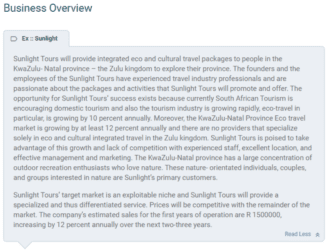
Next, explain what sets you apart and share insights about your service offerings, target market, and ideal customer base. Also, highlight marketing materials, current trends, and potential growth opportunities.
Lastly, give a summary of critical financial figures in terms of projected revenues, profits, and cash flows for the initial 3-5 years. From that, you can address funding needs and resources.
A business plan is a professional, living document that you should update regularly to reflect changes in your business.
3. Provide a Company Overview
Now, it’s time to draft a company overview section that provides a more detailed description of your travel agency.
It could be commercial travel agencies or online travel agencies. Share your agency’s founding story and the individuals behind its inception.
Try to explain your business legal structure(S-Corp, Limited Liability Company, or sole proprietorship), and describe the physical location of your travel agency.
Subsequently, highlight your vision and mission statement in this section to define your identity and core values. This serves as a brand story that your customers can connect to.
Take reference from the below example describing the mission statement of the travel agency:
- Internally we intend to create and nurture a healthy, exuberant, respectful, and enjoyable environment, in which our employees are fairly compensated and encouraged to respect the customer and the quality of the service we intend to provide.
- In addition, follow-up will be mandatory to ensure customer satisfaction and make any improvements as recommended by the customers in the future.
- We seek fair and responsible profit, enough to keep the company financially healthy for the short and long term and to fairly remunerate employees for their work and effort.
Discuss a little bit more about your business background information and how your travel agency works. Try to give answers for when you start your business and how you have set your office space.
In addition, highlight any milestones you have accomplished, such as the number of clients served, positive reviews, new travel agency openings, etc.
4. Conduct an Industry and Market Analysis
An industry and market analysis section is one of the most important ones in your travel agent business plan. It explores your specific niche within the industry and the geographic background where you wish to operate.
So, take some time to go further and find more accurate information, such as who are your target customers & top competitors, what are the current trends, and whether the tourism market is increasing or decreasing.
Market Size and Growth Potential
Conduct a complete market analysis to study the market size and explore growth potential areas for travel agencies. Assess the total revenue generated within the travel industry and identify the emerging trends.
Customer Analysis
Examine your target market in detail, including demographics, travel behaviors, and customer preferences. Understand your ideal clients and tailor your services to satisfy their specific needs.
Do thorough customer research and understand how your target audience plans and experiences trips. This can help better customize packages and offerings to meet your clients’ needs.
Want help writing a target customer segmentation for your travel agency business? Use Upmetrics AI writing assistant now and easily draft your business plan sections:
Competitor Analysis
As a travel agent, assemble a list of direct and indirect competitors in the travel agency industry. You can consider both classic brick-and-mortar travel agencies and online travel agencies.
Evaluate the strengths and weaknesses of each competitor, including service offerings, tour packages & quality, customer reviews, and marketing strategies.
Understanding these competitor factors will help you determine areas where your travel agency can differentiate itself and stand out in the competitive landscape.
Execute a SWOT analysis to find internal strengths & weaknesses of your travel company and external opportunities & threats in the travel industry.
Take reference from the below example showing a SWOT analysis for an XYZ travel agency business:
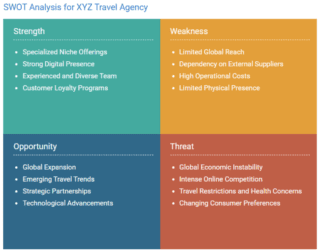
Based on SWOT analysis, formulate strategies to capitalize on opportunities and mitigate threats to outline competitive advantage.
Some extra tips for drafting this section of your travel company business plan:
- Use reputable sources to gather data, including industry reports, market research studies, and surveys.
- Be specific and provide detailed info wherever possible.
- Include charts and graphs to demonstrate your key points.
- Keep your target audience in mind while documenting the business plan.
5. Propose Your Service Offerings
Next, define the scope of your service offerings and clarify how they meet the diverse needs of your clients.
It must be informative, precise, and client-focused, as it is a detailed breakdown of different services that your travel company offers your customers.
As a travel agency, detail your service offerings, such as bookings, accommodations, vacation packages, international/domestic trips, custom-made business trips, or any cruise bookings.
Effectively disseminate your travel services with a detailed description of what it entails, service specifications, precise pricing plans, or any client reviews.
Here, you can take a reference from the below example to illustrate travel agency services:
1 . Guided Tours
Our guided tours are led by knowledgeable local guides who provide valuable insights into the culture and history of each destination.
Price: Varies by destination, starting at [$50] per person
Specifications: Group sizes are limited to 15 people, and tours typically last 2-3 hours.
2. Accommodation Booking
We offer a range of accommodation options, from luxury hotels to charming bed and breakfasts, ensuring our clients have a comfortable stay.
Price: Varies by location and accommodation type, starting at [$100] per night
Specifications: Accommodations are vetted for quality, safety, and comfort.
Not only that, describe any specialized services in your travel agency business plan template that set your travel agency apart so investors can quickly understand your business scope.
In addition to planning & booking, highlight additional services (trip consultations, wedding planning, speaking at industry events, providing training to other travel agents) and mention third-party partners(if any).
6. Outline a Sales and Marketing Plan
Comprehensive sales & marketing efforts can help your business grow by leaps and bounds. Carry out market analysis and develop clear sales and marketing strategies for reaching your target customers.
For travel agency businesses, explain your preliminary approach and promotion tactics to acquiring either local or international customers.
Also, discuss affordable/high-quality travel packages you provide, their prices, and hassle-free transactions at the point of sale. Here are some of the sales and marketing strategies for travel agencies:
Unique selling proposition
Emphasize the agency’s capability to offer personalized customer service, a variety of communication modes, and 24/7 customer support. Present exclusive access to unique destinations, experiences, and special perks.
Pricing Strategy
Implement a flexible and competitive pricing plan that caters to a diverse client base. It allows the agency to adapt to market dynamics, provide value to customers, and uphold a profitable business.
Take reference from the below example written using Upmetrics’ travel agency business plan template:
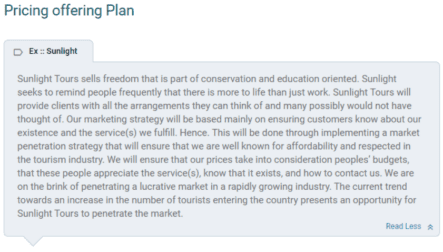
Offline strategies
Create visually appealing brochures and distribute print materials to local businesses, travel agencies, and strategic locations. Implement a referral program and try to provide discounts or exclusive festive offers.
Social Media Marketing
Utilize social media platforms(Facebook, Instagram, Twitter) to highlight travel packages, engage with the target audience, and build a community around travel enthusiasts.
Content Marketing
Create a content marketing strategy comprising blog posts, travel guides, and visually appealing content to encourage potential customers to consider your agency for their travel needs.
Collaborations
Partner with local businesses, hotels, and travel-related service providers to promote your service offerings. Attend travel fairs, trade shows, or community events to network with potential clients.
7. Introduce Your Team
The management team section offers an opportunity to showcase your strength as a travel agent. It should include a thorough plan for your travel agency’s key managers, employees, or sub-travel agents.
Mention their roles & responsibilities or relevant experience in the related fields or travel agency industry. Also, highlight their expertise that contributes to your agency’s success.
Try to break down overall payroll expenses, such as how much their compensation, commission split, base salary, or whether you will give any bonuses or benefits to your employees.
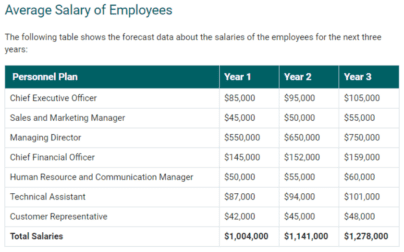
If you need to hire employees or a travel agent, emphasize how many individuals you will need and how much you will pay them.
This can provide brief details to the investors and help them understand what exactly you plan to staff your agency and pay your employees.
If applicable, you can also design an organizational chart for your travel agency. This can help you demonstrate who your key members are and what roles they serve in your travel agency.
8. Outline Business Operations
Now, it’s time to develop an in-depth look into the day-to-day functions of your travel agency. Paint a picture of seamless operations and ensure that your business runs smoothly.
Describe the entire operational cycle of the tour business, including staffing, how bookings are managed, customer service procedures, technology used, and safety measures for handling unforeseen circumstances.
Include the below subsections in your travel agent business plan operations section:
Highlight the number of employees required, and opening hours, and briefly outline the responsibilities of each team member and training programs. Refer to the below example written using Upmetrics AI assistant :
Customer Service Procedures
From pre-travel assistance to emergency response, prioritize customer satisfaction, efficient techniques, and effective client communication to ensure a positive and stress-free travel journey.
Equipment & Technology
Explain what kind of equipment & technology you will need to run your travel agency. Include a brief idea of how you will reach some travel agency milestones and look forward as your business grows.
You might consider below things:
- Office equipment(Telephone, fax, or scanner)
- Travel agency website
- Booking tools
- Itinerary builders
- Customer Relationship Management(CRM)
- Invoicing and payment processing tools
9. Prepare Financial Plan
Currently, you are in a business planning stage, but dedicating some time to putting together the most realistic financial projections is very crucial.
Having a well-structured and in-depth travel agency financial plan will help you show the tentative spending as well as the revenue forecasts and budgets if your travel company is seeking funding from investors.
In this section, you will need to make a few assumptions that will greatly affect the financial statements of your agency. Take a look at the below table to make important assumptions:
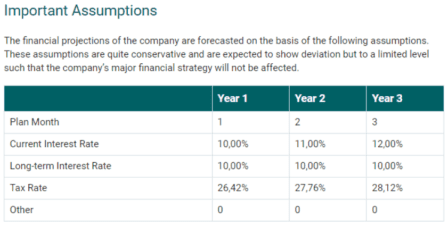
Mention all the below financial aspects in your travel agency business plan:
- Income statement (Profit and loss statement)
- Cash flow statement
- Balance sheet
- Sales forecast
- Break-even analysis
- Business ratios
- Investment strategies
- Exit strategy
From the above financial statements, you can identify the startup funding needs and evaluate the funding resources for your agency, such as bank loans, angel investors, crowdfunding, or personal savings.
Well, keeping a realistic financial report in your hand not only helps you demonstrate your agency’s fiscal health but also emphasizes its sustainability.
However, calculating all the financial elements from scratch can be overwhelming. But don’t worry; consider Upmetrics’ financial forecasting tool .
All you have to do is fill in all the details you have and let the tool calculate financial factors, and create visual reports for you. No manual data entry, placing Excel formulas, or designing graphs—nothing.
Here’s an example of a projected balance sheet for the next 3 years using Upmetrics:
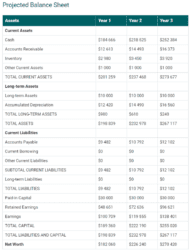
Download a travel agency business plan template
Need help writing your travel agency business plan from scratch? Well, here you go; download our free travel agency business plan template now and get started.
This modern, user-friendly business plan template is specifically designed for travel agencies. With a step-by-step guide and example, it helps you write a professional plan without missing any crucial steps.
Simply import data into your preferred editor and start writing!
The Quickest Way to turn a Business Idea into a Business Plan
Fill-in-the-blanks and automatic financials make it easy.
Start preparing your business plan with AI
Finally! With the help of our sample business plan template, you know how to write a travel agency business plan. So, you are one step closer to starting your travel agency business confidently- pretty exciting, right?
But you know what else is more exciting? Your business planning process can be even smoother than this. Yes, you heard it right; it’s possible with the help of Upmetrics AI Assistant.
So, don’t wait, and start planning now !
Related Posts
RV Park Business Plan
Airline Business Plan
Business Plan Writing Guide
Successful Business Plan Examples
Car Rental Business Plan
Airbnb Business Plan
Frequently asked questions, where can i find a free travel agency business plan template.
There are various online platforms where you can find free travel agency business plan templates. Consider a reputable business planning website—Upmetrics, which offers free templates to help you get started.
What should be included in a travel agency business plan?
A comprehensive travel agency business plan should include below key components:
- Executive summary
- Company overview
- Market research and industry analysis
- Services offered
- Sales and marketing strategy
- Management team
- Operational plan
- Financial plan
How often should i update my travel agency business plan?
It is advised to regularly update your travel agency business plan to reflect changes in the market, industry trends, and business growth. Review and update your plan at least once a year or more often if there are significant changes in your business.
What financial projections are necessary for a travel agency business plan?
Make sure that you include the following financial factors in your travel agency business plan:
- Startup costs
- Revenue projections
- income statement (Profit and loss statement)
- Projected cash flow
About the Author
Upmetrics Team
Upmetrics is the #1 business planning software that helps entrepreneurs and business owners create investment-ready business plans using AI. We regularly share business planning insights on our blog. Check out the Upmetrics blog for such interesting reads. Read more
Plan your business in the shortest time possible
No Risk – Cancel at Any Time – 15 Day Money Back Guarantee

Create a great Business Plan with great price.
- 400+ Business plan templates & examples
- AI Assistance & step by step guidance
- 4.8 Star rating on Trustpilot
Streamline your business planning process with Upmetrics .

Travel Agency Business Plan Template
Written by Dave Lavinsky
Travel Agency Business Plan
You’ve come to the right place to create your Travel Agency business plan.
We have helped over 10,000 entrepreneurs and business owners create business plans and many have used them to start or grow their travel agencies.
Below is a template to help you create each section of your Travel Agency business plan.
Executive Summary
Business overview.
My Itinerary Travel Agency is a new travel agency located in Boca Raton, Florida. The company is founded by Sandra Rodriguez, an experienced travel agent who has gained valuable knowledge on how to run a travel agency during the past ten years while working at Fun Destinations Travel Agency. Now that Sandra has experienced managing a travel agency, she is ready to start her own company, My Itinerary Travel Agency. Sandra is confident that her organizational and communication skills, combined with her understanding of business management, will enable her to run a profitable travel agency of her own. Sandra is recruiting a team of highly qualified professionals to help manage the day-to-day complexities of running a travel agency – sales and marketing, vendor relationships, customer relationship management, budgeting, and financial reporting.
My Itinerary Travel Agency will provide a full suite of travel planning services for individuals nationwide through its sophisticated online platform and accompanying customer app. My Itinerary Travel Agency will be the go-to travel agency for personalized service, convenience, and expertise of its travel agents. The company will be the ultimate choice for customer service while offering the best travel accommodations available.
Product Offering
The following are the services that My Itinerary Travel Agency will provide:
- Airline travel bookings
- Tour and travel package sales
- Accommodation reservations and bookings
- Cruise bookings
- Car rental reservations
- Travel ticket sales and reservations
- Tour ticket sales and reservations
Customer Focus
My Itinerary Travel Agency will target individuals nationwide who are looking for personalized and convenient travel planning services. The company will target vacationers, tourists, and business travelers who are seeking the best deals on premium accommodations. No matter the customer, My Itinerary Travel Agency will deliver the best communication, service, and the best prices.
Management Team
My Itinerary Travel Agency will be owned and operated by Sandra Rodriguez. Sandra is a graduate of Florida University with a degree in business. She has over ten years of experience working as a travel agent for another local agency. Sandra will be the company’s chief executive officer. She will oversee the travel agency staff, manage customer relationships, and build vendor relationships.
Sandra has recruited sales and marketing expert, Sara Anderson, to be the company’s chief marketing officer and help oversee travel agency’s sales and marketing activities. Sara will handle all branding, marketing, advertising, and outreach for the company. She will also create and maintain the company’s online and social media presence. Sara has a Master’s degree in Marketing and has nearly ten years of experience working as a marketing director for a leading travel industry corporation.
Success Factors
My Itinerary Travel Agency will be able to achieve success by offering the following competitive advantages:
- Skilled team of travel agents combined with the latest technology in the industry will allow the company to provide its clients with personalized service and modern convenience to make planning their trip easy and efficient.
- The members of the leadership team have long standing relationships with a large pool of vendors, allowing them to provide clients with the best deals possible on premium accommodations.
- The company offers a variety of modes of communication to better serve more clients’ preferences. Customers can speak with a travel agent in person, via telephone, video call, email, or chat through the website or app. Support is available 24/7 to ensure all clients’ questions and concerns are promptly attended to.
Financial Highlights
My Itinerary Travel Agency is seeking $290,000 in debt financing to launch its travel agency. The funding will be dedicated towards securing the office space, and purchasing office equipment and supplies. Funding will also be dedicated towards three months of overhead costs to include payroll of the staff and marketing expenses. The breakout of the funding is below:
- Office build-out: $110,000
- Office equipment, supplies, and materials: $70,000
- Three months of overhead expenses (payroll, utilities): $90,000
- Marketing costs: $10,000
- Working capital: $10,000
The following graph below outlines the pro forma financial projections for My Itinerary Travel Agency.
Company Overview
Who is my itinerary travel agency.
My Itinerary Travel Agency is a newly established travel agency in Boca Raton, Florida. My Itinerary Travel Agency will be the first choice for anyone seeking a personalized approach, 24/7 support, and streamlined technology to make trip planning easy. The company will serve customers nationwide from their headquarters in Florida.
My Itinerary Travel Agency will be able to guarantee the best deals possible thanks to the leadership team members’ long standing relationships with a large network of vendors in the hospitality, transportation, and entertainment markets. The company’s team of highly qualified travel agents will provide personalized service to each client, removing the uncertainty and hassles associated with finding and booking the right accommodations.

My Itinerary Travel Agency History
My Itinerary Travel Agency is owned and operated by Sandra Rodriguez, an experienced travel agent who has gained valuable knowledge on how to run a travel agency during the past ten years while working at Fun Destinations Travel Agency. Now that Sandra has experienced managing a travel agency, she is ready to start her own company, My Itinerary Travel Agency. Sandra is confident that her organizational and communication skills, combined with her understanding of business management, will enable her to run a profitable travel agency of her own. Sandra is recruiting a team of highly qualified professionals to help manage the day-to-day complexities of running a travel agency – sales and marketing, vendor relationships, customer relationship management, budgeting, and financial reporting.
Since incorporation, My Itinerary Travel Agency has achieved the following milestones:
- Registered My Itinerary Travel Agency, LLC to transact business in the state of Florida
- Has identified the ideal location for the company’s office and is in the process of securing a lease
- Reached out to numerous contacts to include transportation, hospitality, and entertainment companies to begin securing vendor contracts
- Began recruiting a staff of accountants, travel agents, and other office personnel to work at My Itinerary Travel Agency
My Itinerary Travel Agency Services
- Airline travel comparisons and bookings
Industry Analysis
The U.S. travel agency industry is valued at $48.5B with more than 90,600 businesses in operation and over 318,600 employees nationwide. Factors currently driving industry growth include an increase in domestic tourism and travel for overnight trips, vacations, and business purposes. More domestic travel typically results in more consumers using travel agencies to book their trips. The travel agency industry can be segmented by brick-and-mortar establishments or online businesses. The global market size for the online travel agency segment reached $432B last year and is expected to rise as more people use the internet to book their trips. The travel agency industry relies heavily on the use of technology. Industry operators must stay up-to-date on the latest travel technology in order to remain competitive in the market.
One of the most significant hurdles for travel agency operators is attracting customers in the age of do-it-yourself booking. Now that customers are able to book many of their travel accommodations themselves, travel agents must be able to demonstrate why booking with them is a better option. Some ways industry operators can add value are by providing personalized services, promotional discounts, and helpful information about accommodation options.
Customer Analysis
Demographic profile of target market.
My Itinerary Travel Agency will target individuals nationwide who are looking for personalized and convenient travel planning services. The company will target vacationers, tourists, and business travelers who are seeking the best deals on premium accommodations. No matter the customer, My Itinerary Travel Agency will deliver professional communication, service, and the best prices.
The precise demographics for Boca Raton, Florida are:
Customer Segmentation
My Itinerary Travel Agency will primarily target the following customer profiles:
- Individuals and families planning a vacation
- Business travelers
- Individuals and families in need of accommodations for events such as weddings, reunions, or conventions
Competitive Analysis
Direct and indirect competitors.
My Itinerary Travel Agency will face competition from other companies with similar business profiles. A description of each competitor company is below.
Fun Destinations Travel Agency
Fun Destinations Travel Agency is one of the largest and oldest travel agencies in Florida. The company was founded in 1958 in Boca Raton with one small office location. Now, the company has over 50 locations throughout multiple states. Fun Destinations specializes in booking accommodations for family vacationers. The company books accommodations near key family destinations such as theme parks, resorts, and tourist attractions. Fun Destinations is family owned and operated so the founders are familiar with the hassles associated with planning a family vacation. For this reason, Fun Destinations focuses on booking the best family-friendly accommodations so its clients can relax and enjoy the family fun.
Best Fit Vacations Travel Agency
Best Fit Vacations Travel Agency is a small travel agency catering to Boca Raton locals from its central office and nationwide clients via its online booking platform. The company was established in 1995 with the mission of providing vacation accommodations that will be “the best fit” for every client. Best Fit Vacations is owned and operated by industry professionals that have extensive experience working with vendors to negotiate the best deals for clients. The company strives to get the lowest prices for every booking and regularly finds additional savings and discounts other agencies might not know about.
Trustworthy Travel Agency
Trustworthy Travel Agency is a Boca Raton, Florida-based travel agency that provides superior service to its consumers. The company is able to provide a wide variety of travel accommodation bookings for customers in the area. Trustworthy Travel Agency has three locations throughout the state and operates an online booking platform for nationwide travelers. Customers can book online or over the phone at their convenience. The company uses an algorithm that finds the lowest prices on travel, lodging, and other accommodations across the country.
Competitive Advantage
My Itinerary Travel Agency will be able to offer the following advantages over their competition:
Marketing Plan
Brand & value proposition.
My Itinerary Travel Agency will offer the unique value proposition to its clientele:
- My Itinerary Travel Agency offers the best deals through its extensive vendor network.
- The company offers personalized customer service, a variety of communication modes, and 24/7 support.
Promotions Strategy
The promotions strategy for My Itinerary Travel Agency is as follows:
Social Media Marketing
The company’s chief marketing officer will create accounts on social media platforms such as LinkedIn, Twitter, Instagram, Facebook, TikTok, and YouTube. She will ensure My Itinerary Travel Agency maintains an active social media presence with regular updates and fun content to get customers excited about traveling.
Professional Associations and Networking
My Itinerary Travel Agency will become a member of professional associations such as the Travel Agency Association, American Travel Agents Society, and the Florida Travel Industry Association. The leadership team will focus their networking efforts on expanding the company’s vendor network.
Print Advertising
My Itinerary Travel Agency will invest in professionally designed print ads to display in programs or flyers at industry networking events. The company will also invest in professional ads to place in travel magazines and local publications.
Website/SEO Marketing
My Itinerary Travel Agency’s chief marketing officer will design the company website. The website will be well organized, informative, and list all the services that My Itinerary Travel Agency is able to provide. The website will also list testimonials from happy customers.
The chief marketing officer will also manage My Itinerary Travel Agency’s website presence with SEO marketing tactics so that when someone types in a search engine “best travel agency” or “travel agency near me”, My Itinerary Travel Agency will be listed at the top of the search results.
The pricing of My Itinerary Travel Agency will be on par with (and often lower than) competitors so customers feel they receive value when purchasing the company’s services.
Operations Plan
The following will be the operations plan for My Itinerary Travel Agency.
Operation Functions:
- Sandra Rodriguez will be the chief executive officer for the company. She will oversee the travel agents, vendor relationships, and customer relations. Sandra has spent the past year recruiting the following staff:
- Sara Anderson – chief marketing officer who will oversee all marketing strategies for the company and manage the website, social media, and outreach
- Tom Brown – accountant who will provide all accounting, tax payments, and monthly financial reporting for the company
- Christopher Jones – lead customer support manager who will directly oversee all customer support activities
Milestones:
My Itinerary Travel Agency will have the following milestones complete in the next six months.
12/1/2022 – Finalize contract to lease the office
12/15/2022 – Finalize personnel and staff employment contracts for the My Itinerary Travel Agency management team
1/1/2023 – Begin build-out/renovation of the office, and purchase office equipment and supplies
1/15/2023 – Begin networking at industry events and implement the marketing plan
2/15/2023 – Finalize contracts for initial vendors
3/15/2023 – My Itinerary Travel Agency officially opens for business
Financial Plan Business Plan FAQs
Key revenue & costs.
The revenue drivers for My Itinerary Travel Agency are the commissions earned as a percentage of bookings from vendors and fees charged to customers for consultations and services.
The cost drivers will be the overhead costs required in order to staff a travel agency firm. The expenses will be the payroll cost, utilities, greenhouse equipment and supplies, and marketing materials.
Funding Requirements and Use of Funds
Key assumptions.
The following outlines the key assumptions required in order to achieve the revenue and cost numbers in the financials and in order to pay off the startup business loan.
- Average accommodations booked per month: 9,000
- Average commissions per month: $15,000
- Overhead costs per year: $640,000
Financial Projections
Income statement, balance sheet, cash flow statement, what is a travel agency business plan.
A travel agency business plan is a plan to start and/or grow your travel agency business. Among other things, it outlines your business concept, identifies your target customers, presents your marketing plan and details your financial projections.
You can easily complete your travel agency business plan using our travel agency Business Plan Template here .
What are the Main Types of Travel Agencies?
There are a number of different kinds of travel agencies , some examples include: independent agency, host agency or franchise.
How Do You Get Funding for Your Travel Agent Business Plan?
Travel agencies are often funded through small business loans. Personal savings, credit card financing and angel investors are also popular forms of funding. This is true for a travel agent business plan and a tour and travel business plan.
What are the Steps To Start a Travel Agency Business?
Starting a travel agency business can be an exciting endeavor. Having a clear roadmap of the steps to start a business will help you stay focused on your goals and get started faster.
1. Develop A Travel Agent Business Plan - The first step in starting a business is to create a detailed business plan for your travel agency that outlines all aspects of the venture. This should include potential market size and target customers, the services or products you will offer, pricing strategies and a detailed financial forecast.
2. Choose Your Legal Structure - It's important to select an appropriate legal entity for your travel agency business. This could be a limited liability company (LLC), corporation, partnership, or sole proprietorship. Each type has its own benefits and drawbacks so it’s important to do research and choose wisely so that your travel agency business is in compliance with local laws.
3. Register Your Travel Agency Business - Once you have chosen a legal structure, the next step is to register your travel agency business with the government or state where you’re operating from. This includes obtaining licenses and permits as required by federal, state, and local laws.
4. Identify Financing Options - It’s likely that you’ll need some capital to start your travel agency business, so take some time to identify what financing options are available such as bank loans, investor funding, grants, or crowdfunding platforms.
5. Choose a Location - Whether you plan on operating out of a physical location or not, you should always have an idea of where you’ll be based should it become necessary in the future as well as what kind of space would be suitable for your operations.
6. Hire Employees - There are several ways to find qualified employees including job boards like LinkedIn or Indeed as well as hiring agencies if needed – depending on what type of employees you need it might also be more effective to reach out directly through networking events.
7. Acquire Necessary Travel Agency Equipment & Supplies - In order to start your travel agency business, you'll need to purchase all of the necessary equipment and supplies to run a successful operation.
8. Market & Promote Your Business - Once you have all the necessary pieces in place, it’s time to start promoting and marketing your travel agency business. This includes creating a website, utilizing social media platforms like Facebook or Twitter, and having an effective Search Engine Optimization (SEO) strategy. You should also consider traditional marketing techniques such as radio or print advertising.
Learn more about how to start a successful travel agency business:
- How to Start a Travel Agency Business

7 Tips To Create The Best Tour Descriptions For Your Travel Business
Writing a tour description is like writing a letter to your future clients. You need to make sure it's exciting and compelling if it's going to generate new bookings.
Tour descriptions are one of the most important elements of selling more tours. Your tour description represents the end stage of the buying journey. If the description is persuasive, it may result in a booking. If not, you may lose the customer to a competitor.
In this guide, we’ll cover the importance of composing innovative tour descriptions, and outline.

Why Tour Descriptions Are Important
Your tour descriptions play an essential role in attracting customers, engaging them, and getting them to convert .
First of all, your tour descriptions help to make your tours more visible. With the right description, your tour landing pages could achieve better SEO results and become easier for your customers to find.
This is because the tour pages will offer more relevant information, which will ultimately help those who are searching for those queries.
Then, when people land on your tour pages, your tour description is what will entice them to make a booking. This is where the magic comes in - your description needs to sell the tour, and reveal why it's the right experience for the customer.
Your tour description also helps to develop trust by showing the customer that they should have full confidence in your brand.
By providing extensive detail in your tour description, you prepare customers with exactly what to expect from their adventure. This can help them have a more fulfilling tour experience, as they will know what they were getting into when they arrive.
If your tour description is too vague, customers might expect certain things that your tour doesn't actually offer. This could result in negative reviews and a lack of repeat business.
A well-articulated tour description will help your business in the following ways.
- Attract more customers
- Engage with your website visitors
- Increase conversions
- Boost customer satisfaction

Top 7 Tips For Creating Tour Descriptions
Taking the time to concisely write and optimize tour descriptions is essential. Here are some of the best tips and tactics you can use for creating powerful tour descriptions.
1. Ensure Your Tour Descriptions Provide Sufficient Detail
First and foremost, it's paramount that your tour descriptions clearly display all of the details that your tour includes. This should include all logistical details, how long the tour will be, what the tour package includes, what the tour timeline will look like, and so on.
Try to be as specific as possible here. Be clear on who the tour is suitable for. Also, ensure that you outline exactly what is expected from the tour participants (in terms of their behavior and what essentials to bring along).
This will help to answer any questions people may have about your tour and let them know exactly what to expect - which is important for a positive tour experience.
2. Look At The OTAs
Whether or not your business uses OTAs to sell tours, it's a good idea to look at existing OTAs and see how they structure/word their tour descriptions.
This is because OTAs are very specific about the information and details included in their tour descriptions. Making sure your business also covers this information will help you tap into an already proven tour description formula.
Also, look at how OTAs categorize and organize their tours . Taking a similar approach can help your tour booking website offer a better user experience.
Conduct a gap analysis to see what information and details might be missing from these pages This could help ensure that all pertinent information is included and make your descriptions more informative and appealing.

Another nifty tip is to keep your descriptions uniform. If a potential customer browses different tour booking pages and compares your tour options, having a uniform tour description format will make their journey a lot easier. This also ensures that all of your tour descriptions offer the same, relevant information.
3. Include Keywords
A tour description is a prominent place for keyword placement . When executed properly, this can boost your SEO efforts, and help your tour pages gain more visibility for relevant online searches.
When writing tour descriptions, conduct thorough research into potential target keywords - this is the main search query your tour will be targeting. For example, if you offer fishing tours in Florida, the relevant keyword that prospective customers might be something for will be along the lines of “Florida fishing trips”.
Once you have found your target keyword, incorporate it naturally into your tour description. Inserting the keyword a few times in your text will help search engines understand what your tour is about. This should improve its visibility for the correct search terms.
Adding variations to your keyword, and being specific about the keyword, is also important. For example, your fishing tours page could include keywords like “boat fishing Trip in Florida” or “full-day fishing tours Florida”. This could help your page to gain relevancy for a wider range of online searches.
There’s a lot more that goes into successful SEO than just this, but being conscious about inserting keywords into your tour description can make a big difference to your tour page’s discoverability.

4. Showcase Your USP
Your Unique Selling Proposition (USP) is what sets your tour apart from the competition. It's essential that you make your USP perfectly clear in your tour description.
Tourism can be a highly competitive market, and there may be many similar tour operators in your area. Customers will want to know what makes your tour unique in order for them to book through your platform.
In order to understand your USP, it's important that you research your competitors. Check out their tour descriptions, and see what they don't offer that you can highlight about your tour. This will give you a competitive edge and make your tour description more appealing.
Your USP could be that your tours are more affordable, more sustainable , support local communities , or even cater to specific groups . Maybe you’re offering a luxury tour with hotel transfers, or perhaps your tours run at unique hours.
Whatever the case, highlight the USP clearly in your tour description.
This is also important for persuading people to book your tour instead of doing it themselves. For example, you might offer tours to a popular site, like the Colosseum. If this is the case, you need to convince tourists that booking your tour is more worthwhile than their visiting the Colosseum independently.
In this instance, your USP could be that your fee comes with a “skip the queue” benefit, that you offer expert guides who share unique historic details, or that your guides offer a local perspective of the area.
Make the value of your tour clear, and your tour description will help you generate more bookings.

5. Understand Your Buyer Personas
It's important that you keep the customer journey in mind and speak directly to your target audience when writing your tour description.
Having clear buyer personas will help you write tour descriptions that speak to your target customer’s interests, answer their questions, and solve their pain points. Understand what kind of person would be searching for your tours and why they would book one.
Are they looking for an adventure? Do they want to learn through educational tours ? Are they hoping to relax while on vacation? Maybe they want to escape their comfort zone and try something new. Whatever the case, you should address these areas in your tour description.
6. Utilize Reviews And Testimonials
It is no secret that reviews and testimonials have become a significant part of the buying decision . This is because they provide one of the best ways to establish trust.
This is necessary for pushing your website visitors into making a purchase decision.
Incorporate positive reviews or testimonials into your tour description. Potential customers might not trust what your brand has to say, but they will trust reviews and testimonials from previous, satisfied customers.
Simply adding a quick blurb like “9 out of 10 customers rated their experience as outstanding” can make your tour description a lot more compelling.
7. Use Video And Images
Writing tour descriptions is important, but optimizing your tour booking pages with videos and images can be a game changer.

Try to include videos and images of your tours in your description. This will give potential customers more realistic insights into your tours, how they work, and what to expect from the experience.
Using quality imagery can help to tell your story better, which is important for inspiring customers to book your tours.
If you rely solely on a written tour description, people might struggle to imagine what to expect from your tour. This could prevent people from making bookings.
Conclusion
Writing a good tour description can benefit your business in a number of ways. Most importantly, it will attract more people to your tour pages and help you generate more bookings.
Understanding your target audience is key, and highlighting the important facts about what unique selling proposition your travel company offers and why people should book through your platform can make or break whether prospective customers equate to conversions.
By following the seven tactics above, your tour description could help you tremendously to generate a lot more bookings .
New resources, straight to your inbox
We’re committed to your privacy. WeTravel uses the information you provide to us to contact you about our relevant content, products, and services. You may unsubscribe at any time.
About the author

Related Posts
Top reasons why customers abandon the travel booking process, best travel sales techniques to respond to clients negatives during the booking process, reasons why you need to streamline your travel business’ booking process.
- Write for Us
- Paid Content Solutions

- Company Posts
- ExpertHub Today
Global Capability Centres Boom As They Move Up The Value Chain

Global Tech Companies Are Turning To South Africa For Media And Marketing Expertise

Innovation Summit 2021 Showcases SA’s Top Tech Entrepreneurs
Three customer experience strategies you’re missing, embracing a digital-first world, smbs can have the confidence to thrive, applications for sab foundation are now open, trending tags.
- Paid Content Services
Travel Tour Agency Sample Business Plan
Start-up your travel tour agency with a business plan similar to this detailed example..

Related Topics
Car wash business plan, event planning sample business plan, coffee shop business plan.
Starting your own travel tour agency but don’t know how to compile your business plan? Here’s an example of a dummy company’s business plan to get you thinking about how to create yours.
Travel Tour Agency Business Plan
1. executive summary.
The tourism industry has undergone rapid growth of unsurpassed nature over the last several decades. This has mainly been due to the advent of a ‘borderless’ world and increased information dissemination about the majestic sceneries throughout the world, with the southern African region being no exception.
We are on the brink of penetrating a lucrative market in a rapidly growing industry. The current trend towards an increase in the number of tourists entering the country presents an opportunity for Sephats Tours to penetrate the market.
An opportunity for Sephats Tours’ success exists because the national tourism industry is growing at a rapid pace annually.
Sephats Tours is poised to take advantage of this growth and moderate competition in the city travel portion of the industry, with a dedicated and experienced staff, excellent networking, and effective management and marketing. Sephats Tours intends to provide travel and adventure packages to tourists primarily in the Southern region, but also the whole of Botswana.
Services and products provided by Sephats will initially include pre-arranged tours, custom packages according to clients specifications, travel consultation, and as time progresses making reservations for lodging amongst other related services. Sephats Tours seeks to differentiate itself as the premier adventure mobile operator in the greater Gaborone area.
Our services will be positioned very carefully: They will be of extremely high quality, comfortable, informative and tailored to the clients needs such that they will enable individuals to have a greater appreciation of the natural environment and its intricacies.
Our marketing strategy will be based mainly on ensuring customers know about our existence and the service(s) we fulfill. Hence our intention is to make the right information available to the right target customers. This will be done through implementing a market penetration strategy that will ensure that we are well known and respected in the tourism industry.
We will ensure that our prices take into consideration peoples’ budgets, that these people appreciate the service(s), know that it exists, and how to contact us. The marketing will convey the sense of quality in every picture, every promotion, and every publication.
Our promotional strategy will involve integrating advertising, events, personal selling, public relations, direct marketing and the Internet, details of which are provided in the marketing section of this plan.
It is important to recognise that we do not intend to just take individuals on sightseeing excursions, but also to ensure that they appreciate nature through informative briefings on objects’ origins.
This element will assist in differentiating us from our competitors and contribute towards the development of a sustainable competitive advantage.
Hence we need to engage the right people in the right place at the right time if we are to ensure optimum growth. We intend to develop our team so that our people can grow as the company grows – a mutually beneficial relationship.
We project sales to increase from more than P350,000 (Botswana Pula [P]) the first year to more than P556,500 the second, and P630,000 in the third year.
In a nutshell, we do not just intend to market and sell our service, but to market and sell travel solutions and a total-quality environment. This will ensure we establish a reputable corporate image.
1. Objectives

Our business strategy will revolve around the need to provide quality service to our various target customers, in the process fully satisfying their needs. This shall be undertaken through recruitment of a professional team and the provision of good quality custom-designed travel packages, catering to the client’s particular needs.
With time our marketing campaign will increase the awareness of our services in the various market segments we shall be targeting. This is particularly so with the organisation looking at establishing a clear advantage(s) in an increasingly competitive market.
We will provide clients with the opportunity to focus on their core activities whilst their transportation side needs are fully satisfied. Marketing material shall be professionally done so as to be reflective of our intended image and reputation.
We shall position ourselves as a quality commercial transportation operator that provides customer-need fulfillment, enjoyment, reliability and a good image. We intend to establish a good rapport with all the relevant stakeholders, especially hotels and travel agents.
We also intend to have well-designed brochures and other promotional material that will enable clients to have an understanding of the types of services we offer and advantages of utilising them.
In addition well-done, informative brochures, fact sheets and business cards often have a triggering effect on clients contemplating utilising our services. Hence this will undoubtedly generate increased sales of our service.
In summary we intend to attain the following objectives:
- Continuously provide enjoyable quality excursions/trips on time and on budget.
- Develop enthusiastically satisfied customers all of the time.
- Establish a market presence that assures short-term and long-term profitability, growth and success.
- We are fully committed to supporting growth and development in the tourism and overall economy of Botswana.
- Contribute positively to our communities and our environment.
Internally we intend to create and nurture a healthy, exuberant, respectful, and enjoyable environment, in which our employees are fairly compensated and encouraged to respect the customer and the quality of the service we intend to provide.
In addition follow-up will be mandatory so as ensure customer satisfaction and make any improvements as recommended by the customers in future.
We seek fair and responsible profit, enough to keep the company financially healthy for the short and long term, and to fairly remunerate employees for the work and effort.
3. Keys to Success
The keys to Sephats Tours success will undoubtedly be effective market segmentation through identification of several niche markets and implementation strategies.
Along these lines the company intends to implement advertising, personal selling and direct marketing strategies to the target markets.
Our personal selling marketing strategies will rotate around keeping in touch with hotels and travel agencies for major customers, and advertising for more individual customers.
Hence our key success factors will include the following:
- Excellence in fulfilling the promise: We intend to offer completely enjoyable, comfortable and informative travel excursions that will ensure that travelers are thoroughly satisfied and appreciative at the end of their trip.
- Timely response to customers’ requests: We cannot afford to delay our clients for whatever reason, as this will have a negative bearing on our image and reputation, including future business. Hence we need to be continually communicating with the client, including hotels and lodges so as to ensure that we are constantly available to the client meeting their expectations.
- Solid and fruitful strategic alliances : Considering the nature of our services and our relative infancy on the market, we realise the importance of establishing and maintaining fruitful strategic alliances with various stakeholders, including hotels, lodges, and travel agencies, amongst others, so as be assured of a constant flow of customers, fulfilling their needs at every opportunity.
- Marketing know-how: As a relatively new company on the market there will be a need to aggressively market our business and the services we provide so as to be continuously at the top of our prospective clients minds. This will also act as a temporary deterrent for companies contemplating entering our market. Advertising shall be undertaken on a regular basis.
2. Company Summary
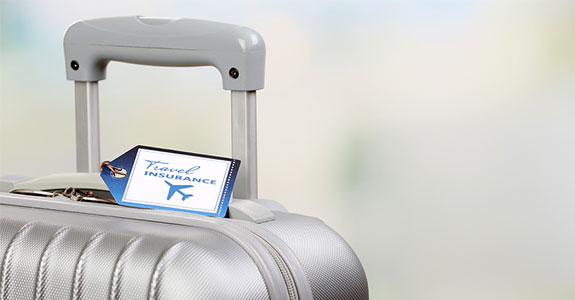
Sephats Tours intends to provide individual and group travel to leisure clients.
Services and products provided by Sephats will initially include pre-arranged tours, custom packages according to clients specifications, travel consultation, and as time progresses making reservations for lodging amongst other related services.
Sephats Tours seeks to differentiate itself as the premier adventure travel company in the greater Gaborone area.
As it grows it will take on people and expand into related markets and services. It will also look for additional leverage by establishing relationships and representations with appropriate strategic allies.
1. Company Ownership
Sephats Tours is a Private Limited company incorporated at the Registrar of Companies through the foresight and vision of Mr. X and Mrs. Y. It is a 100% wholly owned Botswana firm.
2. Start-up Summary
Thus far the directors have contributed one hundred and sixty seven thousand pula (P167,000) to purchase a Mercedes Benz mini bus currently in its possession and P30,000 for cash expenses. Total start-up expenses covered (including legal costs, business plan compilation, license costs and related expenses) come to approximately P5,000.
3. Company Locations and Facilities
At present the company offices are located at Plot Number 28338, Block 3, Belabela road opposite Gaborone Television Station, near Hill Crest Primary School.
However, as time progresses the intention is to move into more accessible and attractive offices in a prime area. This regardless of the fact that our type of business is not too dependent on office location and size.
3. Services

Sephats Tours is a travel company that intends to deliver leisure travel excursions to customers. Sephats intends to guide customers in selecting a trip(s) based on pre-defined vacation criteria. This analysis will be based on user profiles, set by the consumers, which includes preferences such as:
- Activities sought
- Destination, and
- Time of Travel
A traveler will hence be able to select areas of interest based on their preferences and subsequently identify destinations to visit.
The intention is to provide customers with access to exclusive travel destinations, service to fully appreciate destinations through information packages, not just sight-seeing, and access to special interest travel according to the group’s/individual’s preferences.
1. Competitive Comparison
There are presently few competitors offering services similar to ours. However considering the pace of change and current growth rate of the tourism industry luring many companies into the sector, this may be short-lived.
Hence there will be a need to not only firmly establish ourselves on the market, but also strongly differentiate ourselves from these other businesses. However on a broader scale our competition comes in several forms:
The most significant competition are hotels and travel agencies offering travel excursions to their clients. They undertake this service in order to establish a competitive advantage over their competitors.
However, instead of directly competing with them we intend to establish good working relationships in the form of strategic alliances such that we are able to offer the service for their clients and thus enabling them to concentrate on their core activities whilst ensuring customers are fully satisfied.
Our key advantage in this regard will be our specialty of the service and hence wide knowledge ensuring customer satisfaction at all times as well as flexibility in providing the service. Existing hotels, lodges and travel agencies may identify the opportunity to diversify into our intended services utilising their current client database.
Naturally, existing clients will be inclined towards utilising these familiar companies due to the fact that a good relationship may have already been nurtured over the years during their business dealings.
This presents a potential challenge to us, as we need to aggressively market our services and expertise in the field. Existing safari operators that mainly focus on the remote environs such as Maun and Kasane are at times able to compromise, offering excursions in and around Gaborone, though very rare. Hence we intend to focus on this market. An analysis of competition is provided in the Market Analysis section of this plan.
2. Service Description
Sephats Tours intends to offer the service and knowledge a discerning leisure traveler seeks whilst on vacation, with the intention of seeing and appreciating the numerous sights in the area.
Keeping in mind the comforts of a tourist, our fleet shall be very well maintained and designed as per customer standard and expectations. However not wanting to limit ourselves we intend to be open to special hire by churches, organisations, groups, schools and sports teams, amongst other related groups.
The game reserves and lodges that we intend to be our main destinations are:
- Mokolodi Nature Reserve
- Goborone Game Reserve
- Gaborone Dam
- The Oodi and Mochudi Craft Villages
- Kolobeng and Thamaga
- Khutse Game Reserve
Below is a briefing of several places of interest and their various attractions.
- Mokolodi Nature Reserve: Set in a wide valley just 10 minutes drive from the city, this scenic reserve offers a well-developed network of game drives and stone and thatch chalets overlooking a water hole. Mokolodi also offers the rare opportunity to track rhino or to walk through the bush with young elephants. These excursions offer excellent photographic opportunities. Evening drives can include a bush braai giving visitors the chance to see the more unusual nocturnal creatures.
- Gaborone Game Reserve: This 550 hectare reserve provides an ideal get-away for tourists who can see a remarkable range of wildlife in the park including rhino, eland, zebra, gemsbok, wildebeest, kudu, ostrich and impala, all on well-maintained bush roads that are designed for easy access. Bird watching in the Gaborone Game Reserve is excellent, particularly along the eastern edge, bounded by Notwane River, and it typifies the incredible diversity of bird life to be found throughout the Gaborone area.
- Gaborone Dam: On the south bank a remarkably rich variety of bird and wildlife can be seen, including herds of impala, kudu and scuttling families of warthog. New picnic sites, which are currently under development will also provide places of interest. The Gaborone Yacht Club is the main attraction on the dam with its swimming pool, bar and wide verandah overlooking the water off a rocky koppie in the middle of the dam which often becomes an island in the wet season.
- The Oodi and Mochudi Craft Villages: In Oodi the main attraction will be the Lenstwe-la-Oodi weavers. In Mochudi apart from traditionally decorated Setswana architecture, the tourists will find the most southerly baobab trees in Botswana and traditional crafts including the Ithuteng Tin Workshop and Ikgabiseng handmade jewelery. The Phuthadikobo Museum in Mochudi will also be an attraction site.
Other sites will include Matsieng Foot Point, Gemsbok National Park, Mabuasehube Game Reserve, Legaga la ga Kobokwe, Central Kgalagadi Game Reserve, Nxaii Pan and Khama Rhino Sanctuary.
Integrating the above places of interest into our tours we intend to be offering the following tours:
- “Capital Crusade” – City Tour: This will be a professionally guided tour around the city centre including visits to the Main Mall, Finance Mall, National Museum, City Council Library, Gaborone Station, and House of Parliament including others. These tours shall be eye opening in terms of the normal Botswana town folk life style providing knowledge and information throughout the guided tour. Included in this package will be refreshments and information folders detailing the main sites and history of Gaborone. This tour will cover approximately 50 kilometers taking about half a day to complete. Cost: PX per person.
- “Cultural Enrichment” – Cultural Tour: This shall involve tours to the main historical and cultural sites in and around Gaborone including Mokolodi Nature Reserve, Oodi and Mochudi Craft Villages, including the cultural dances. This tour shall reveal the ‘Kgotla’ – cultural villages, traditional paintings and art, as well as the traditional lifestyle. Obviously baobabs will make for good viewing. The tour package will include an information folder, guided tour and refreshments. This tour will cover approximately 200 kilometers taking the whole day to complete. Cost: PY per person.
- “The Essence: Past & Present” – City & Cultural Tour: This will be a combination of the cultural tour and city centre excursion. This will be marketed as a “total package” enabling tourists with very little time to appreciate the Botswana lifestyle, both in the present and past. This tour will invariably take the whole day and cover approximately 250 kilometres. The tour package will include the information folder, guided tour, refreshments and a picnic lunch. Cost: PZ per person.
3. Macro-environment
At a large scale research demonstrates that tourism is undergoing a rapid growth of unsurpassed nature. Generally there is a trend towards shorter stays but increased visits, as individuals strive to experience as many cultures as possible, including seeing as many attractions as possible.
Increasingly Botswana is being marketed as “one of the few places in Africa where game sanctuaries have remained completely unspoiled.
A destination that unlocks the mystery of nature – an oasis in a wilderness which is an ideal escape for nature lovers. Very little of this fascinating country has seen human habitation – this is true Africa in all her remoteness and authenticity.
With such marketing in place the number of tourists entering the country is bound to increase, presenting a larger potential market for ourselves. This potential market is what we seek to tap.
4. Sales Literature
The business will begin with a general corporate brochure establishing its position on the market. This brochure will be developed as part of the start-up expenses including the business cards and Company Profile, mainly for the large organisations that often recommend services to potential customers.
Compliment slips are also intended so as to raise awareness of the company and its services. We also intend to have information pamphlets that will provide information on our various tour packages. Literature and mailings for the initial market forums will be very important.
5. Fulfillment
The key fulfillment and delivery will be provided by the employees of the company. The real core value will be professional expertise, provided by a combination of expertise, experience, hard work, and education (in that order). Hence we intend to ensure that the work we undertake is always thorough and relevant to the clients’ needs.
We will turn to reputable companies for supplying the necessary individuals and groups for our services. Hence the need to establish good relationships with our strategic allies.
6. Technology
Sephats Tours will strive to ensure that it contains the latest, or extremely recent personal computer including relevant software so as to ensure that the company is continuously at the forefront in our market arena.
The one certainty in our industry is that technology will continue to evolve and develop, changing what we market as well as how we market it. Our aim will be to be aware of the implications of this new technology and utilizing it in our existing framework where possible. However it should be noted that as we are new on the market it will take some time before we have in place our own website and other multimedia presentations.
With time we also intend to have the latest and most efficient software in place to enable smooth operations.
7. Future Services
In putting the company together we have attempted to offer enough services to allow us to always be in demand by our customers and clients. The most important factor in developing future services/products is market need.
Our understanding of the needs of our target market segments shall be one of our competitive advantages. It is critical to our effort to develop the right new services. In the future, Sephats Tours intends to broaden its coverage by expanding into additional markets.
One of the main services it aims at providing is to become a destination management company that brings alive the magnificence of this country to the traveler. This will be done by co-coordinating the traveler’s entire experience from hotel bookings, safaris and tours, greeting and porter services, and to tour packages and incentives. However in doing so we will strive to ensure that it is compatible with the existing products and company personnel.
As time progresses the intention will to provide a Southern Africa tour package covering the whole of southern Africa.
4. Market Analysis Summary
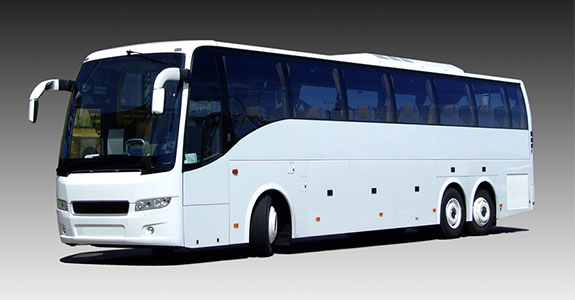
We are today experiencing a rapid growth in the economy of unsurpassed nature. This has been brought about by, amongst other things, the relaxation of foreign exchange policies and macroeconomic policies geared towards attracting foreign investors into the country.
The fiscal and monetary policies of the government geared towards maintaining growth with social justice have largely contributed towards this, evidenced by our economy averaging a growth rate of 7% since 1990 – very high by international standards.
The current drive and emphasis by the government on diversification of the industrial base away from the minerals sector presents an opportunity for Sephats Tours to make a valuable contribution towards achieving this goal. Having undertaken a thorough and comprehensive research of the market we realized that there was a need for a tourist transport company that focuses on providing leisure excursions to tourists.
Though there are mobile operators currently on the market, some of whom have been in existence for a relatively long period of time, we believe that there is a market need for one that specializes on providing comfortable and enjoyable transport to tourists and visitors.
This, also considering the fact that, potentially Botswana’s richest natural resource, the tourism industry is becoming an increasingly important player in the economy and may in the long term prove even more valuable than mineral resources in earning foreign exchange.
Aware of the fact that operating in such a market is largely dependent on good networking, we intend to establish networks and strategic relationships with various hotels, lodges and travel agents to ensure a steady stream of clients.
However in so doing we intend to ensure that the service we provide is of extremely high quality and comfortable. Our initial overall target market share shall be 10% of the market, mainly focusing on the greater Gaborone area and southern Botswana.
We appreciate that entering such a market is not a ‘bed of roses’ and will require us establishing strong links with strategic partners as outlined previously. Hence we intend to implement an aggressive marketing strategy, well supported by the other business functions.
The above prognosis influenced our decision to enter the tourist transport industry.
1. Market Segmentation
We will be focusing on those foreign tourists seeking leisure travel and excursions whilst on vacation in Botswana, with the intention of letting them see and appreciate the numerous attractions in our country.
Though we realise that the majority of our tourists come from South Africa we shall be mainly targeting those from Europe and the Americas who often do not have transport or adequate knowledge about the country, unlike their South African counterparts who often do. Hence we shall be mainly targeting those who are not that mobile but wanting to see as many sites as possible.
These people often do not want to waste their money on hiring vehicles to move about by themselves, but instead want to be escorted around places of interest by a reliable source. Hence the need to professionally market ourselves and the services we provide, offering a service of uncompromised nature.
2. Target Market Segment Strategy
Our marketing strategy will be based mainly on making the right service(s) available to the right target customer. We will ensure that our services’ prices take into consideration organisations’ and peoples’ budgets, and that these people know that we exist, appreciate the value of our services, and how to contact us.
The marketing will convey the sense of quality in every picture, every promotion, and every publication. Our intension will be to target those individuals and groups looking for leisure activities and places to visit.
We realise the need to focus our marketing message and our service offerings. We need to develop our message, communicate it, and make good on it. The decision to establish strategic alliances with several hotels, lodges and travel agencies is aimed at tapping our target market effectively and efficiently.
2.1. Market Needs
Though the tourism sector has undergone rapid growth over the last decade the vast majority entering this sector have rushed to the North where we have the Okavango Delta, Chobe National Park, and other sites as attraction points.
Very few have focused on south and central Botswana. With this in mind we intend to exploit the untapped market in this area so as to provide our customers with a good service and realize our business objectives.
We understand that our target markets need more than just being shown the areas of interest but also to be informed about their significance and origins. Hence we don’t just intend to provide a service(s), but to provide one of unparalleled nature relative to the market.
2.2. Market Trends
Of all the uncertainty surrounding this industry, one fact is certain: tourism is here to stay. The only question is how large the industry will become and whether it can sustain, if not exceed, its current growth rate. However large the market ultimately becomes, the company strongly believes that travel will be an important component of this market place. Tourism statistics provide a reliable guide as to the size of the market.
According to the latest tourism statistics total arrivals for 1998 amounted to 1,351,798 representing an increase of approximately 12.65% from the previous year. Of the total arrivals in 1998 205,146 (15.2%) were holiday/tourists whilst 319,440 (23,6%) were visitors, both groups of which constitute our target market, totaling approximately 524,586 individuals.
Source: Tourism Statistics 1998 – Central Statistics Office .
ExpertHub Staff
ExpertHub’s team of Staff Writers deliver unique, insightful and curated content from successful business leaders, authors and subject matter experts. This highly-experienced team understands the information that business readers are looking for, what’s unique and impactful, and how to distil key ideas into actionable insights.

Boost Your Income: Five Proven Strategies for Mid-Career Professionals
You’re 40 something, mid-career, and you feel stuck. You need to make more money, but you don’t know how.

How to Make Money by Writing on Fiverr
Are you ready to unlock your writing potential and turn your creativity into cash? Learn how to make money by...

Step-by-Step Guide: How to Start Your Own Hair Salon Business
Are you ready to turn your passion for hair into a thriving business? Follow our step-by-step guide to start your...

Unlock Your Freedom by Joining Laptop Lifestyle
Are you ready to unlock your freedom and join the laptop lifestyle? It's time to find work that ignites your...
- Terms & Conditions
- Data Privacy Policy
- Privacy Policy
Copyright © 2022 ExpertHub.info Revenue Growth Experts
Welcome Back!
Login to your account below
Remember Me
Retrieve your password
Please enter your username or email address to reset your password.

- Increase Online Bookings
17 Innovative Tourism Business Ideas and Trends for 2024

In This Article: Trends to Inspire Your Tours and Activities
Gig-Tripping, Bleisure, and Skip-Gen Travel: From eco-conscious adventures to immersive culinary experiences, what are some of the top travel business ideas likely to appeal to travelers in 2024? And how can tour businesses capitalize on them?
It’s that time of year again; when we take a deep dive into the research into travel and tourism trends for the year ahead so you don’t have to. As well as scouring the travel press, talking to our partners, customers and contacts, and racking our own brains here at Rezgo, we’ve picked highlights from several influential research reports into tourism business trends for 2024.
Even if you’re getting into the tour operator industry, there’s a lot of reasons to be optimistic. Read on to learn the tourism trends you can use to start your tour business in 2024.
Reasons to be cheerful about tourism in 2024

These findings were backed up by UNWTO’s latest Tourism Confidence Index survey of travel professionals. It found that “67% of tourism professionals indicating better or much better prospects for 2024 compared to 2023.”
According to the UNTWO, reasons to be optimistic in 2024 include:
- An uptick in the reopening of several source markets and destinations in Asia
- An increase in Chinese outbound and inbound tourism
- More travel to and around the Middle East and Africa through a unified tourist visa implemented by Gulf Cooperation Council (GCC) countries
- Strong outlook for travel to Europe, for example for the Paris Summer Olympics, and from the United States, backed by a strong US dollar
On the flip side, according to UNWTO findings, “Persisting inflation, high interest rates, volatile oil prices and disruptions to trade can continue to impact transport and accommodations costs in 2024.” In addition, if you have been having difficulties finding staff, you’re not alone. Many tourism businesses continue to face challenges filling vacancies to help them meet the steadily rising demand from travellers.
Overall though, 2024 promises an exciting array of tourism trends that cater to diverse interests and preferences. Let’s take a look at travel and tourism business ideas for 2024, with a focus on ideas for tours, events, activities and attractions that your travel business could use to attract new and existing customers alike.
Trending tourism business ideas for 2024
1. sustainable tourism and ecotours.
According to the UNWTO report, many travellers will consider “sustainable practices and adaptability” when making their travel plans in 2024. They are not only interested in booking with tour companies that do business in a sustainable way, but they also want to travel in an eco-friendly way, seek out eco-friendly places to stay and book activities and tours with a sustainability element. This is backed up by Arival’s “ The 2024 U.S. Tour Taker ,” which found that nature tours and other “ecotours” are in high demand from US travelers in particular.
Booking.com’s trends report for 2024 prompted the online travel marketplace to predict that ”the world of travel is poised for a sustainable makeover,” as travellers seek out eco-friendly places to stay and activities and locations with a sustainability element. TravelPulse reported that many travelers increasingly look to travel off season and seek out less well-known destinations to do their bit to try to decrease overtourism.
So-called “ecotours” let tourists enjoy a vacation while also learning about environmental and sustainability issues in a particular location. Some enable people to do something tangible to help, such as volunteering to plant trees or help to restore habitats. Many travelers these days also seek out “small footprint” or socially-responsible travel. This may not be an ecotour as such; it could just mean they favor tour companies that take steps to minimize the impact of their tours or incorporate a social responsibility element. Booking.com’s Sustainable Travel Report 2023 found that 76 percent of travelers want to travel more sustainably in 2024.
2. Train travel
From the “Flying Scotsman” to the “Orient Express,” there are few more romantic ways to travel than by train. However, train travel continues to overlap with other trends in our list, as it becomes more popular as a way to travel more sustainably by reducing car and air travel, traveling slower (unless we’re talking train travel in Japan) and for longer, as well as traveling to more countries on the same trip. Train travel as both a means to travel and see more of a destination continues to increase in popularity. Euromonitor International found that in 2024, “the fastest growing travel category worldwide is rail transport at 35.6 percent over 2023-2024.”
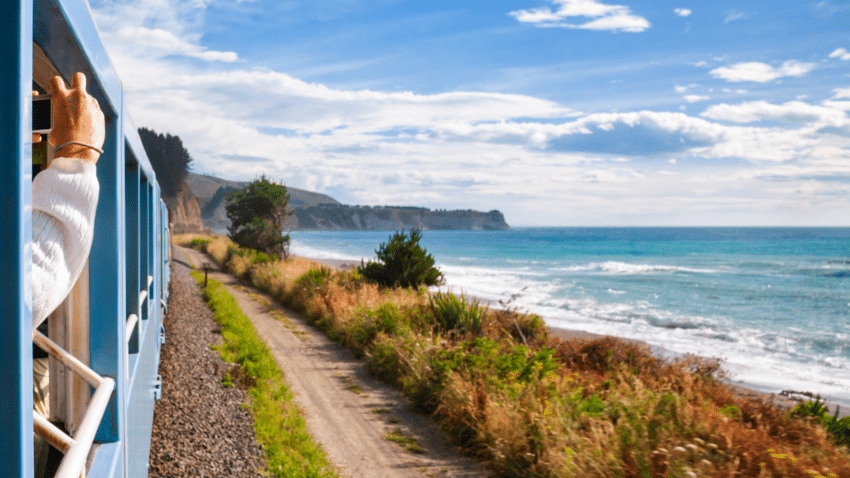
Train travel can also offer scenic views, comfortable travel with spacious seats, sleeping accommodations for longer or overnight trips, the opportunity to socialize with other travelers, and convenient access to city centers. Again overlapping with other trends, train travel also offers more immersive travel experiences and lets travelers see more of a country while mixing with locals. Many countries and rail companies, especially in Europe, offer passes that let travelers visit multiple places in one trip without leaving the ground.
3. Food and drink experiences

Many of the reports we looked at highlighted culinary experiences as a trend for 2024. After all, who doesn’t like a good meal or drinks with friends? Many travellers want to combine their love of food with their love of travel. Food tours allow travellers to savour the authentic flavours of a destination while discovering, and literally getting a taste for, its cultural heritage. Activities such as cooking classes let travelers enjoy an even more immersive culinary experience.
While winery tours have long been a favourite travel activity for wine lovers, an explosion of craft beer, vodka, gin and other drink producers provides a multitude of other opportunities for drink-related tours activities. They can cater as much to enthusiasts looking to indulge in the finer things in life, as true connoisseurs. Booking.com found that 78 percent of travellers want to experience new foods, and half go to the length of organizing trips around specific restaurants or dishes, including iconic dishes of particular destinations. And keep an eye on “wild-feasting”—a new trend where you not only eat locally-grown ingredients but forage for, and even cook, them in the wild.
4. Sports tourism
Sport is a passion for many people around the world, and travelers often like to combine their love of a particular sport or sports team with their passion for travel. In 2024, Europe hosts the Paris Summer Olympics and the soccer UEFA Euro 2024, while soccer lovers often travel to see their favourite team in England, Spain, Germany and the top European leagues. However, even smaller teams get a look in. The Netflix show Welcome to Wrexham has put the small Welsh town on the map after Hollywood stars Rob Mcelhenney and Ryan Reynolds bought the local soccer team.

As well as events like the Olympics, there are also annual events that attract global interest, such as the Super Bowl, the Tour de France and Formula One, which also has a hit TV show, Formula 1: Drive to Survive . A sporting, or other, event can provide a reason for people to visit a particular location, even if they don’t have tickets, to sample the atmosphere and explore the sights.
5. Tours and experiences with locals
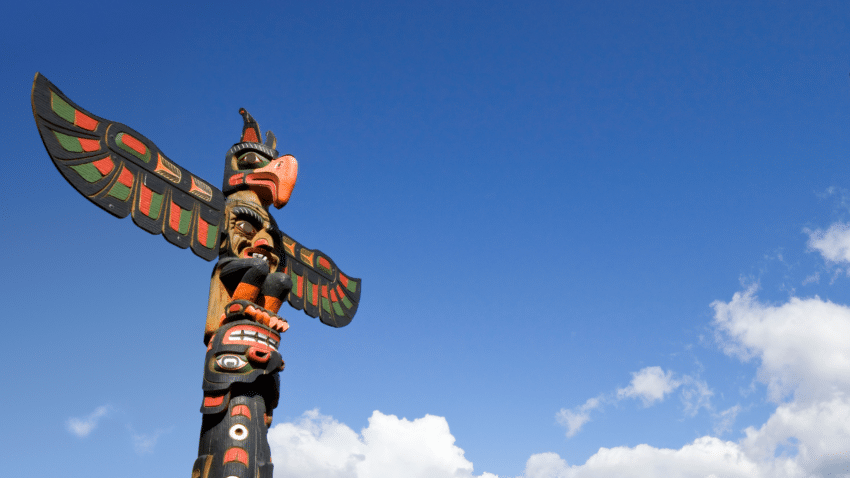
Immersing oneself in the local culture is made possible through tours or experiences led by knowledgeable locals. These insiders offer unique insights, hidden gems, and authentic encounters that enhance the overall travel experience. They help meet a growing demand for more immersive experiences that take travelers inside a location and culture and deepen their understanding of it. Hilton’s 2024 Trends Report found that many travellers will prioritize experiences (85%), exploring the unknown, trying local food, and learning about the local culture.
Indigenous experiences are still a growing trend. Countries around the world, such as Canada, Australia and New Zealand, are making an increased effort to reverse past wrongs when it comes to treatment of Indigenous peoples, while also empowering Indigenous communities to take a lead in areas like travel and tourism.
6. Transformational trips
A buzz phrase you heard a lot of in 2023 was “transformational retreat,” and 2024 looks likely to continue the trend. Booking.com’s 2024 travel trends report prompted them to label 2024 as a year that reinforced that “travel isn’t just an escape, but a catalyst for experiencing our best lives.”

A transformational trip is a travel experience designed around a specific activity, personal goal, or mental or physical health need. They can include retreats that cater to people who want to undergo a significant personal or spiritual transformation, or at least get away from it all in order to return refreshed. Retreats and activities include meditation, yoga, therapy, workshops, and other experiential practices. Most promote self-awareness, personal growth, and positive change, typically taking place in a secluded and peaceful setting and led by experienced facilitators or coaches.
Wellness vacations have been a growing tourism business trend for some time, with demand accelerated by the pandemic. Tours that offer people the chance to pamper themselves and generally recalibrate are likely to be extremely popular for the foreseeable future.
7. Quiet travel
Not everyone is looking for a transformational outcome from their vacation; many simply want to unwind and enjoy some quality “me time.” Continuing the 2023 trend, many people still want to unplug and undertake a “digital detox.” They could be seeking respite from “doom scrolling” through social media and news feeds on their digital devices, or they just want a break from the glowing screens so prevalent in their day-to-day.

Trips that encourage travelers to leave their devices at home will be popular, whether to a wellness retreats that bans or discourages digital devices, or an out-of-the-way destination that makes electronic communication extremely difficult. As well as digital detoxing, an example of a trend that is still going strong is forest bathing. This involves becoming immersed in nature to enhance physical, mental, and emotional well-being. It can be as simple as going for a long walk through a forest, or sitting by a lake and taking in the sights, sounds, and smells of the natural surroundings. Research has shown that forest bathing can reduce stress and anxiety, improve mood, and even boost the immune system and reduce blood pressure and heart rate.
8. Skip-gen travel
Deloitte’s “2024 travel industry outlook” report found that the baby boomer generation is getting back into the swing of things when it comes to traveling. This could be a factor in the emergence of a trend towards “skip generation trips” or skip-gen travel. This is when grandparents take their grandkids on vacation as a way for these two generations to bond and create some memories. Boomers can have more disposable income and more time, and parents with kids that can travel in this way appreciate the chance to travel on their own or just enjoy a break at home. All-inclusive resorts and other places with lots of activities for different generations are popular skip generation trips.
9. Solo travel
Of course, not everyone has a posse to travel with or wants to travel with others. Solo travel continues to be very popular and has moved from a niche to a mainstream market. A Skyscanner report found that 40 per cent wanted to travel solo for mental health wellness reasons, while singles and divorcees ranked highly for being ready to take a solo trip. The report concludes: “There is no longer any stigma attached to taking a trip on your own, and many tour companies cater specifically to this market.”
Arival ’s 2024 U.S. Tour Taker report found that the preference for independent travel increases with age, with 38 percent of people over 55 preferring to go it alone, compared with 26 percent of the 18-34 group. This indicates that older, more experienced travelers, who are often more affluent, prefer small group and independent travel. Women travelling on their own or with other women also continues to be a growing trend, with a number of tour operators dedicated to women-only trips.
10. Frontier travel
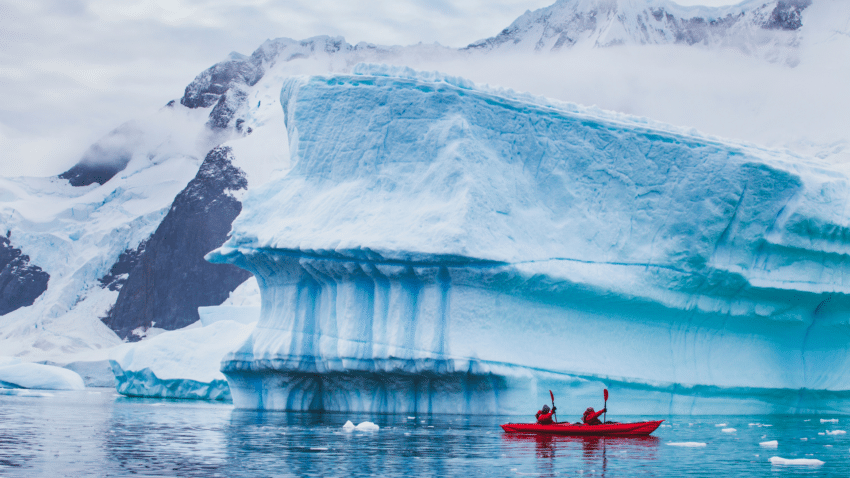
While it may sound like something out of the script for the TV show Westworld , frontier travel is a new travel trend for 2024 that takes travelers into wilder, more unusual destinations off the beaten track. This could mean grand adventures like following in the footsteps of great explorers across the Drake Passage to Antarctica or up Everest. Or it could mean taking a guided group trip to hike to and camp in a remote location or journey down a river by kayak or canoe.
These trips need a certain element of adventure and excitement, challenging travelers to get out of their comfort zone. This ties in with the transformational trip trend above, as people seek experiences that they will not only remember forever, but that could change them forever.
11. Hush trips, workcations, and micro-cations
In our 2023 report we highlighted the trend toward “hush trips” (when remote workers take a workcation without telling their boss) and workcations, when people travel abroad with the intention of combining a vacation with work. This kind of travel continues to be popular, and accommodation providers—from hotels to Airbnb apartments—often boast of dedicated work areas and other facilities for remote workers.
Many such trips are “micro-cations,” short trips often taken close to home, often at the last minute. The micro-cation trend has continued to grow for the last few years, as people look for quick, convenient, and often budget-friendly getaways that don’t require a lot of planning. When you combine the acceptance of remote working among many more employers with a large number of people who left the office behind and didn’t miss it for a second, you have an opportunity to create workcation and hush trip experiences for digital nomads and remote workers.
12. Traveling for “bleisure”
The tourism industry and travel press do love a good old portmanteau to describe the latest trend. Hot on the heels of workcations, the related trend of “bleisure” shows no sign of letting up. Bleisure is a name coined to describe the trend of business travellers tacking on some leisure time to the end of business trips or just taking their family along with them. Where a workcation is often a longer trip designed around work, the growth of bleisure trips reflects the fact that as business travel bounces back, people still want as much vacation time as they can get.
Deloitte’s “2024 travel industry outlook” report found that corporations are more concerned with costs than COVID now, but “trips to build client relationships and support team collaboration remain key to business success.” In fact, the report found that “US corporate travel spend is still likely to finally pass the pre-pandemic line within the next year.”
13. Set-jetting
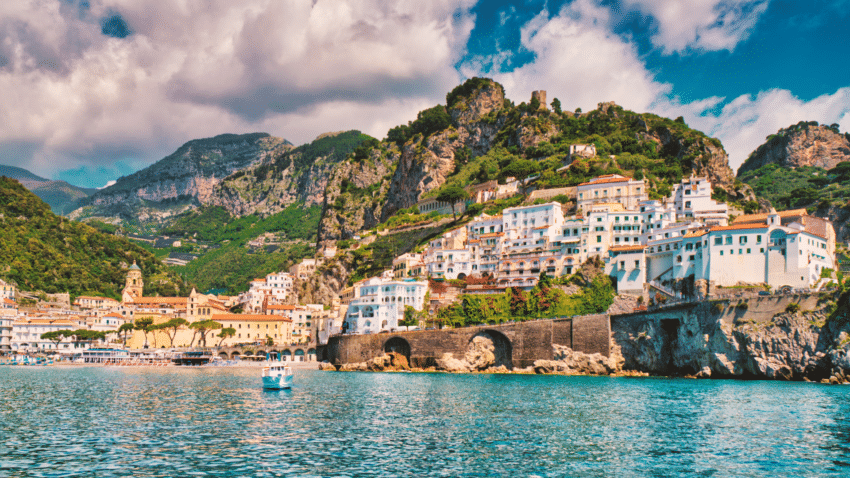
If you’ve ever wanted to visit the set of your favourite movie or TV show, you’re not alone. A top travel trend for 2023 that is continuing in 2024 is “set-jetting,” when travelers visit destinations primarily because they were featured in a popular movie, TV show, or book. According to research, 39 percent of travelers have booked trips to places featured on shows or movies ( Expedia ). While people have long been drawn to iconic movie locations, perhaps the earliest example of mass set-jetting was New Zealand’s tourism industry getting a huge boost after the country played a leading role in the “Lord of The Rings” movies. Fans of the “Outlander” books and TV series have also been making pilgrimages to Scotland to see the country that provides the backdrop for their favourite show.
People don’t just want to visit the actual physical set and filming location, but also just the cities or countries featured in a particular production. Popular shows where the location is as much the star of the show as the actors, such as “The Crown” (England,) “Emily in Paris” (Paris,) and “The White Lotus” (Sicily), have been credited with triggering a surge in demand for particular locations and experiences relating to the shows, such as a themed tour. And tour companies like Black Tomato have jumped on the trend to offer set-jetting itineraries .
14. Destination dupes
The economic upheaval we saw through 2022 and 2023 looks set to continue through 2024, . Inflation and cost of living rises mean while the desire to travel is still strong, many travelers will still have at least one eye on their budget. This has led to a new trend called destination dupes, when people seek out trips to locations that offer similar experiences to well-known or preferred locations, but that are more cost-effective.
Hotel giant Marriott commissioned a survey of over 14,000 travellers , and over 25 percent said they were choosing destination dupes in 2024. Examples of dupes include someone who lives in the US choosing a Canadian lake resort over an Italian Lakes destination. Here’s a good guide to popular holiday swaps for 2024 .
15. Coolcations
In the wake of rising temperatures and an increase in the number and intensity of wildfires in parts of North America, Europe and around the world, keeping cool is likely to be top of mind for many travelers in 2024—even among those who typically seek out the sun for their vacation.
Enter the “colocation.” Marriott’s survey found that over half of respondents would be considering climate change when planning their trips. Fifty-six percent said they were more interested in cooling down than baking in the sun. This makes areas like northern Europe a popular destination dupe as people look for similar attractions, such as culture, scenery, etc., to the hotter locations they might have chosen in the past but with a cooler climate.
16. Gig tripping
Just as the trend of people taking trips to sports and other events has grown, so too has this travel trend that is music to the ears of the travel industry. For example “swifties” from around the world are flocking to Taylor Swift concerts abroad, especially if tickets in their home country, especially the US, are hard to come by. CN Traveler called this the Swift Effect, as people travel to one-off gigs to see their favourite performer, as well as established (Glastonbury in the UK and Coachella in the US) and new (Untold in Romania) multi-day music festivals.
17. Sleep retreats

As we highlighted in our 2023 trends, everyone likes a good night’s sleep, especially on vacation, and the travel industry is waking up to the opportunities offered by a rise in “sleep tourism.” This trend continues to grow. Some travelers simply want a relaxing holiday with a comfortable bed and in an environment conducive to getting plenty of rest. For example, the Park Hyatt New York offers a stay in their One Bedroom Sleep Suite by Bryte . Others are taking advantage of a growth in technology geared towards helping people get their eight hours a night, and are booking “sleep retreats.” Swedish bed brand Hastens opened a branded Sleep Spa , and the HOTEL de LËN offers guests a “regenerative sleep experience.” Good night, sleep well.
These are just a selection of travel business trends for 2024 that could open up new opportunities for your tour business. For example, we haven’t even touched on how technology is changing the travel industry. And don’t forget traditional travel experiences, or in-destination activities. The Arival report highlighted that sightseeing tours, “hop-on, hop-off” experiences, and other tried and tested travel experiences and ways of seeing the sights are still going strong.
How to take advantage of innovative tourism business ideas
In an ever-evolving landscape of travel and tourism, the trends for 2024 reflect a desire for authenticity, sustainability, and immersive experiences. From eco-conscious adventures to culinary escapades and everything in between, travelers are spoilt for choice when it comes to exploring the world in new and exciting ways. Embracing these trends promises to enrich the travel experience and create lasting memories for adventurers of all kinds.
The key to taking advantage of these innovative tourism business ideas and other tourism industry trends is to always be thinking of your next profitable business opportunity. Here are a few ways to keep on top of what’s new and interesting in the travel business:
Maintain an ideas file
Include those “out there” trends that seem absurd the first time you hear them. Think about some recent innovations that would have been dismissed with a laugh not that long ago: Self-driving cars, passenger space travel, drone deliveries… Even that Holy Grail of futuristic inventions, the personal jetpack, is getting closer to reality. All but the most outlandish trends are worth tracking in case there’s a germ of an idea for a new business opportunity in there.
Listen to your audience
Hang out in online travel discussion forums, on social media, and in other places where travelers gather to swap notes and ideas or express needs and dreams. You might uncover a new business idea no-one else has come across yet.
Follow your competitors
Monitor what your direct competitors and others in the tourism business are up to. Subscribe to every industry newsletter you can, including those of your competitors, to keep up with emerging trends and help with your business idea generation.
Solicit customer feedback
Be proactive in asking your customers for feedback. Don’t just ask them what they liked and didn’t like about their experience with your company; ask them if there’s anything they would like to do that they currently can’t.
Invest in the right booking system
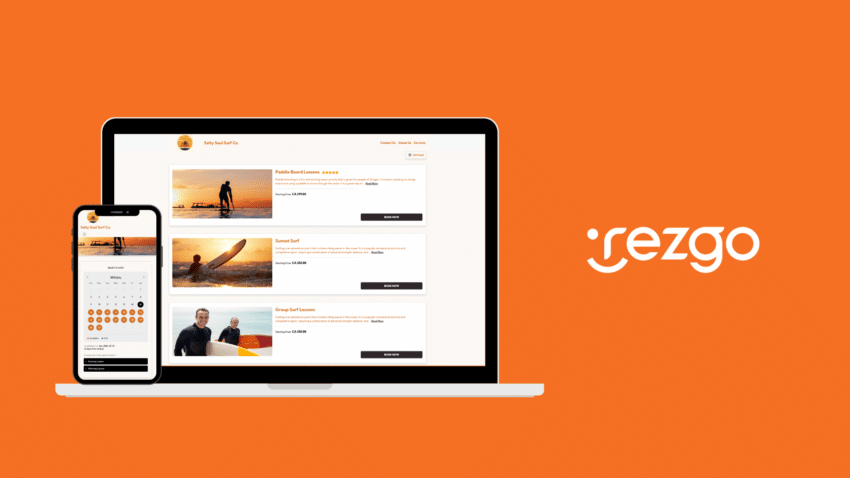
It goes without saying that every tour operator should offer online booking and take a mobile-first approach. Not doing both of those things makes taking advantage of the above trends very difficult. The customer experience starts the moment they enter your website. Online booking enables them to easily browse, book, and pay for tours anytime and from is anywhere. Learn more about how Rezgo booking software is tailor-made for adventure companies.
At Rezgo, we always have our ear to the ground when it comes to the latest tourism trends and business opportunities. The Rezgo booking system is a comprehensive platform that enables you to become a more

Written By | Rob Mathison
Rob Mathison is a Vancouver-based freelance writer focusing on tech, travel, digital marketing, and education. He is a co-author of The Complete Resident’s Guide to Vancouver.
Previous Article Promoting Travel Products With Google Things To Do
Next Article Rezgo Update 12.15: Powered Up Price Tiers, Meta Pixel Tracking, And More
Related Posts

Articles , Increase Online Bookings , Tourism Trends
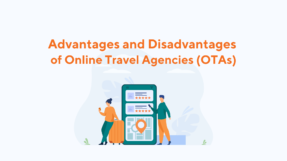
Articles , Increase Online Bookings , Tourism Best Practices
Advantages and disadvantages of online travel agencies (otas).

Articles , Increase Online Bookings , Marketing Strategies
Your marketing mix: the 7 ps of travel and tourism marketing, search the blog.
- All Categories
- Tourism Trends
Most Popular Articles
- 17 Innovative Tourism Business Ideas and Trends for 2024 99 views
- Advantages and Disadvantages of Online Travel Agencies (OTAs) 54 views
- Your Marketing Mix: the 7 Ps of Travel and Tourism Marketing 43 views
- How to Create a Business Plan for Your Tour or Travel Company 10 views
- How to Create and Promote Amazing Tour Packages 9 views
I have read and agree to the Rezgo Privacy Policy
GET STARTED
Sign-up for a free demo.
Lorem ipsum dolor sit amet, consectetur adipiscing elit, sed do eiusmo tempor incididunt ut labore et dolore magna aliqua.
Schedule A Demo
Don't bother with copy and paste.
Get this complete sample business plan as a free text document.
Travel Agency Business Plan
Start your own travel agency business plan
Adventure Excursions Unlimited
Executive summary executive summary is a brief introduction to your business plan. it describes your business, the problem that it solves, your target market, and financial highlights.">.
Adventure Excursions Unlimited (AEU) was formed to provide hard-adventure sport/travel packages with upscale accommodations, gourmet food, and celebrity service providers to wealthy clients. AEU hard adventures include helicopter-skiing, kayaking, white-water rafting, and mountain biking. The founders of AEU are Jordan Stephan (MBA/JD), Jillyn Certo (MBA), and Loren Harlo (MBA). In addition to their MBA status, they are passionate about the activities AEU will offer.
An opportunity exists for two reasons:
- Tourism is a growing industry (4% annually), and within the industry adventure travel is growing at 10%.
- There are few providers of hard-adventure travel to upscale clients.
Virtually all companies that provide “hard” adventure activities appeal to a lower income client. Companies that appeal to a wealthier clientele generally provide “soft” adventure packages. Hard-adventure activities involve difficult physical requirements. They carry a higher level of risk than do “soft” activities. Soft adventure activities may involve some physical exertion, however they involve a low level of risk and can be engaged in by non-athletic people.
The company’s target customers are high income (min. $75,000 for single person), health-conscious individuals interested in popular hard-adventure sports. These are lawyers, bankers, executives, doctors, etc. The major purchasers are located in urban areas within major United States cities. Our customers are more likely to be married. 51% are men and 49% are women.
In addition, more niche markets are evolving. Initially, it will be difficult to compete with experienced providers, especially market leaders. However, AEU’s target market is an exploitable niche and our service is differentiated. AEU’s target market members will have similar activity interests, more disposable income and less sensitivity to price.
AEU will price its services at the top of the market. We will provide a luxury service with prestige value. Our prices will be out of reach for the majority of adventure travelers. Service will be priced based upon luxury competitor prices and the value added of our offering. Providers that offer luxury services similar to ours do so at similar prices. We are competitively priced in the luxury market. Because we appeal to a smaller market, volume will be limited. However, we will be able to capture a higher gross profit margin.
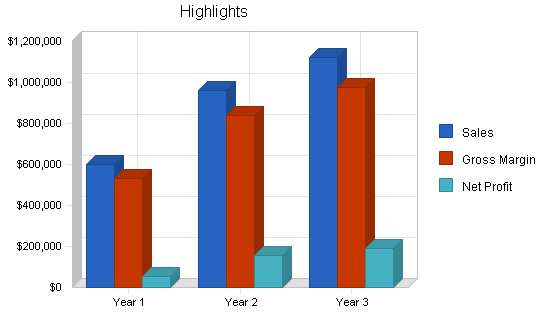
1.1 Objectives
Adventure Excursions Unlimited’s objectives for the first three years of operation include:
- To create a service-based company whose #1 mission is exceeding customers’ expectations.
- Capturing 25% market share of the high-end hard-adventure travel space.
- To develop a sustainable, profitable business.
- To achieve a 35% return rate of customers within the first three years.
1.2 Mission
Adventure Excursions Unlimited’s mission is to provide customers with the highest quality outdoor adventure. We exist to attract and maintain customers. When we adhere to this maxim, everything else will fall into place.
Company Summary company overview ) is an overview of the most important points about your company—your history, management team, location, mission statement and legal structure.">
Adventure Excursions Unlimited, located in Eugene, OR will offer hard-adventure trips to the upper end of the travel market. AEU will be concentrating on three activities, mountain biking, heli-skiing, and white-water adventures. AEU has chosen these three activities to allow the company to not be restricted by seasons, we will have trips occurring through the year. While AEU’s office is located in Eugene, it will be leading trips throughout the United States, and the world.
AEU expects the first several months will be used to plan trips and train trip leaders. By the end of year one the trips should be in full swing and AEU will be building a solid customer base.
2.1 Company Ownership
Adventure Excursions Unlimited will be a privately held Oregon Corporation. Jordan Stephan, Jillyn Certo, and Loren Harlo will all hold equal number shares of AEU stock.
2.2 Start-up Summary
Adventure Excursions Unlimited’s start-up costs include all the equipment needed for an office, as well as the equipment needed for the mountain bike trips and white-water adventures. Other costs will be marketing fees, website development, insurance and a deposit for the office lease.
The office equipment will consist of four computer systems, DSL router, printer, CD-RW, CPU to be used as an internal server, phones, copier, fax machine and installation of DSL and two phone lines.
The equipment needed for the mountain bike trip will be a fleet of 15 bicycles, a self contained kitchen, shower and toilet system, and bicycle tools.
The equipment for the white-water adventures will include inflatable rafts (and other requisite related equipment), self contained kitchen set up, portable shower and toilet facilities, and lots of dry bags.
The marketing costs are for the brochures and advertisements. AEU will also incur costs in the development of our website. Lastly, insurance will be a large start-up expense.
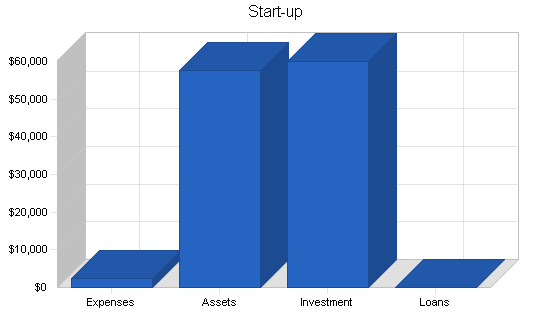
AEU will position itself as a niche service provider within the hard-adventure market. It will offer high-quality travel packages for extreme sporting trips. To begin AEU will offer six trips: helicopter-skiing trips to Canada, India, and New Zealand, white-water rafting trips to New Zealand and Costa Rica, and a mountain biking trip along the Great Divide from Montana to New Mexico.
The target market will be made up of young professionals who work and play hard. These people can afford to play expensively, and are willing to buy time in the form of our services. AEU will serve the hard-adventure niche market as a top quality, full-service provider. AEU defines quality by the unique aspects of the services offered. Those aspects include booking group or custom trips, assistance with passports, providing top-of-the-line equipment and supplies, and a superior service offering with access to better terrain, luxury accommodations, entertainment, celebrity exposure, and gourmet food.
The tours to be offered are as follows:
- Mountain Biking : This event will take place on the Great Divide trail from Montana to New Mexico and is designed for the serious biker that appreciates a few of life’s comforts along the trail. Showers and gourmet meals will be provided, along with entertainment. All excursions will maintain a staff to client ratio of 1:2.
A comprehensive map system has been created by Adventure Cycling and is currently available for purchase. The map clearly indicates the route, places to camp, stores for food and laundromats. Leadership training for the guides will be developed in-house using some outside material. There are many similar organizations that will be good sources of information. The products needed for this trip are for the most part already manufactured. One item that needs to be designed and built is a privacy compartment for the solar shower. This will be designed by Jordan and manufactured in-house. A cookbook collection of simple recipes, including some personal favorites, will also be assembled. Professional cooks will be provided, and flown in if necessary.
- Heli-skiing : Helicopter skiing has become a popular alternative to resort skiing. It offers uncrowded access to the best terrain. For those who like to get off the beaten path heli-skiing is for them. AEU has planned annual and custom trips to three destinations. Everything will be taken care of for the customer. Transportation, lodging, transfers and skiing is included in the package. Although our trips are planned at peak ski seasons, mother nature cannot be predicted. In the event that the weather is too treacherous to ski the trip will be postponed. An in–house travel consultant will accompany each group and take care of all check-in and transfer issues.
AEU will not send clients to places we ourselves would not go. All service providers will be top-notch professionals with accomplished backgrounds. They will be medically trained, and evaluated for knowledge and ability to ensure safety and high-quality service. If they fail, at any time, to meet our rigid standards of quality, they will not be used. If quality falls, another provider will replace them. These activities take place outside of the United States and therefore we will hire local guides to accompany our professional guides and service providers.
- White-water Sports : New Zealand and Costa Rica were chosen for these ten day long hard-adventure excursions. There can be a maximum of ten people per group. Annual trips will be planned to each location, but for large enough private groups, custom trips can be planed. As with the heli-skiing trips, local guides will be used in addition to our own. The abroad trips will be a cooperative effort in-house, as well as local guides in the host countries. The choice to seek outside consulting for the trips abroad is due to each countries different legal and regulatory climate. The potential subcontractors and guides are individuals currently in the industry in their respective countries.
Market Analysis Summary how to do a market analysis for your business plan.">
Travel industry is an upward growth industry. There are several reasons for this increase. First, a relative healthy domestic economy over the last several years and the devaluation of currency in other regions has made travel less expensive for U.S. residents. Pleasure travel has increased by 3.2% in 1999 and is predicted to grow 2.0% in 2000. Second, the healthy economy has increased business, which in turn boosted domestic business travel 4.8% in 1999 with an estimated increase of 3.6% in 2000.
Adventure travel is a growing segment of the travel industry. One theory of the recent increase in extreme sports has to do with the strong competitive nature of younger Americans. Statistics show that 8,000 U.S. companies (that offer adventure packages) generated $7 billion in 1999. There also has been a 66% increase in executive participation between 1996 and 2000 (or an increase of 2,000 participants)(La Franco, Robert. Forbes, Feb 9, 1998 v161 n3 p168(3)).
Some quick facts:
- Adventure travelers: More than 50% of the U.S. adult traveling population, or 147 million people, have taken an adventure trip in their lifetime (98 million in the past five years). Thirty-one million adults have engaged in hard-adventure activities like white-water rafting, scuba diving and mountain biking. An additional 25 million engaged in both a hard- and soft-adventure activity. Six-percent of those who participated in adventure trips spent more than $2,500.
- Activities most commonly participated in during adventure vacations: camping (85%), hiking (74%), skiing (51%), snorkeling or scuba diving (30%), sailing (26%), kayaking or white-water rafting (24%), and biking trips (24%).
- Biking vacations: Twenty-seven million travelers with customers that tend to be young and affluent. Ages 18-34 and one-fourth are from household’s w/annual income of $75,000 or above.
4.1 Market Segmentation
AEU’s target customers are high income (min. $75,000 for single person), health-conscious individuals interested in popular hard-adventure sports such as skiing, white-water sports and mountain biking. The major purchasers are located in urban areas within these United States cities.
Customer Location (within the United States):
- Pennsylvania
Hard-adventure travelers are more likely to be men. Therefore, AEU’s primary target market for hard-adventure sports is men between the ages of 18-34. However an increasing number of hard-adventure travelers are women (some statistics suggest that women comprise 49% of the hard-adventure market). Men, on average, spend more than women on their adventure travels.
Customers will be reached through traditional marketing communication methods. Information has been located relating to specific profiles of both hard- and soft-adventure travelers, where they live, work, what they do, etc. Research suggests that many of our target customers, and travelers in general, are Internet savvy. As such, the Internet will serve as an appropriate and effective medium of communication. Many adventure travelers purchase over the Internet or buy through travel agents. Purchase decisions are influenced by the amount of disposable income held, family issues, and the economy of a given year.
AEU will be targeting two specific groups:
- High-income health-conscious individuals.
- Young, active “trustafarians.”
The common elements between these two groups are money and a love for adventures. Group one has a lot of money from income that they earn. Group two has a lot of disposable income because the money was given to them, typically by members of their family. The second group, the trustafarians, is a very small group relative to the first group.

4.2 Target Market Segment Strategy
AEU will promote/position itself as a differentiated provider of luxury hard-adventure travel, and will price accordingly within the chosen service niche.
AEU is targeting this special population for several reasons:
- This segment, up until now, has been underserved.
- This market segment traditionally spends a fair amount of money on adventure trips.
- This target segment seems to be willing to pay a premium for a top-shelf adventure excursion.
Methods of communication will include direct mail, magazine advertising, personal selling and WWW presence. Continuous magazine advertising will be costly. Initially the use of direct mail, and personal selling will be employed. These methods of communication will be tailored to reach our target segment.
4.3 Service Business Analysis
As operations progress, AEU will continue to measure our progress relative to competitors and to the growth of the market(s) in which we operate. Though the primary target market has been defined, there may be new possibilities to serve additional segments. As the product is defined, and the strategy differentiation is defined based on competitive strengths, AEU will be better able to determine whether adjustments in positioning are necessary. Access to important information concerning the market, competitors, etc., is available. However it is not free. For the purposes of this project, we feel it is unnecessary to incur additional expense.
The marketing strategy will be to develop long-term relationships with customers. We will keep a database from which to obtain important demographic and psychographic information. As the business becomes profitable, plans will be implemented to expand. There is virtually no limit to the number and variety of trips AEU can provide. Trips can take place on every continent and in most countries. The goal is to establish AEU as an international provider of top-of-the-line hard-adventure travel.
4.3.1 Competition and Buying Patterns
Strengths and weaknesses of the competitors:

Companies that offer higher-priced, more luxurious packages generally provide a “soft” adventure. The activities are more along the lines of sightseeing and low-risk alternatives. The advantages these companies have include established reputations, extensive knowledge of the industry, and key personnel and management. Some have been in operation for more than twenty years. They are familiar with local service providers and have established strategic relationships.
Disadvantages to us:
- It will be difficult to price ourselves competitively when we first enter the market.
- Many of AEU’s activities are seasonal. Recurring revenue will depend upon successful trips in various regions of the world. For example, ski trips will end in April in North America. AEU will then have to move ski operations to places like Las Lenas, Argentina.
- The weather for a given year is hard to predict. Poor conditions will threaten the success of trips. Unforeseen occurrences such as inadequate snowfall could effect the viability of activities such as skiing and white-water sports.
Closely related competitors:
Abercrombie & Kent: A well-established, international travel provider. Their focus is mainly on “soft” adventure packages such as safaris, river tours (e.g. Amazon), trekking, sightseeing, etc. However they do offer a “Connoisseur” line of packages. These are generally priced starting from $4,000-7,000. Some of their packages include white-water activities and hiking, however most are touring packages.
Competing or substitute products:
There are many activities and types of travel available to people contemplating a vacation. Theme parks, motorhome trips, and cruises are just a few. Substitutes could include less expensive, self-planned trips, trips geared towards soft-travel, adventure trips involving hunting or fishing as primary activities, or exclusive adventure trips such as personal submarine tours of the Titanic or a trip around the world in a Leer Jet. Many activities that take place outside and involve some level of risk could be seen as hard-adventure competition.
Another alternative is to do nothing. Consumers do not have to vacation. They may opt to spend the money they would have otherwise spent on a vacation on something else.
Strategy and Implementation Summary
Adventure Excursions Unlimited will be going after the upper-end of the hard-adventure market. This market up until now has been underserved, there are hard-adventure tour companies, but none that are catering to the high-end spectrum. With the adventuring traveling industry steadily increasing, AEU sees a unique opportunity.
AEU’s main objective in its marketing and sales activity is to make the impression on prospective customers that AEU offers a higher level of service relative to any other provider of hard-adventure tours. This will be communicated through all of the different media that we use. If AEU can make the impression that our trips are truly different and superior, then our research indicates that there will be steady demand.
Once AEU has clients signed up and participating on our trips, it will rely on superior customer attention and service to impress and retain clients for future trips. Developing long-term relationships will be the key to steady growth.
5.1 Competitive Edge
The competitive edge in our services is the access we provide to popular “hard” adventure sports without the budget constraint of typical travelers. That is, most travelers are looking to spend less than “hard” adventure sports without the budget constraint of typical travelers. The majority of providers cater to these people. Adventure Excursions Unlimited intends to use the same service providers but provide more exclusive trips. Accommodations will be primarily in small luxury hotels and resorts. Meals will be exceptional, more like gourmet cuisine. In addition, the adventure activities will be better than average because the clients have more money. They won’t get stuck with people they don’t like; they will get access to the best terrain, sections of rivers, etc. AEU’s activities are very popular. AEU’s target market has no problem spending $4,000 per week on heli-skiing. Moreover, they generally make this type of activity an annual event.
5.2 Sales Strategy
The sales strategy is to create long-term relationships with customers through superior service. The intent is to initially target the primary customer group. This group has been defined as persons who have purchased, or are likely to purchase, a “hard-adventure” vacation for over $2,500.
The trips planned are designed with the wealthy adventure traveler in mind. Later marketing efforts may include trips geared towards corporate clients, Eco-tourism or hard-adventure trips for people who want to spend less money. Target customers will be identified through standard research methods. There are a number of publications available that contain profiles of Adventure travelers.
Methods by which we will contact customers will depend on results of marketing/sales research. We will likely use trade or special interest magazines, direct mail, Web-based communication, and personal selling. In addition printed materials will be made available to customers through travel agencies that cater to the adventure target market. Initially, service will be introduced regionally, and possibly nationally. Sales will be extended into the global market within a few years of operation.
Our services are seasonal. Recurring revenue will be dependent upon successful trips involving a variety of activities offered year-round. We hope to promote out of season services through frequent customer contact and our own publication, most likely a magazine of some sort. We will review up-and-coming trips, offer highlights of past trips and try to do other creative articles, giveaways, customer profiles, etc.
Most sales will occur at the retail level. The sales that occur between customers and travel agencies will be discounted appropriately, approximately 15%. Transactions will occur as the result of customer contact in response to communication efforts. In addition, AEU will engage in personal selling.
5.2.1 Sales Forecast
The following charts and table shows AEU’s expected sales forecast.

5.3 Milestones
Adventure Excursions Unlimited will have several milestones early on:
- Business plan completion. This will serve as a roadmap for the organization. While AEU does not need a business plan to raise capital, it will be an indispensable tool for the ongoing performance and improvement of the company.
- Set up the office. This will be the main/only office located in Eugene, OR.
- Develop the training program. This program will be used to train the leaders of our trips.
- Completion of first trip.
- Completion of twentieth trip.

Management Summary management summary will include information about who's on your team and why they're the right people for the job, as well as your future hiring plans.">
Jordan Stephan, VP, Corporate Council, Business Development, and Mountain Biking Activity Supervisor : Jordan received his Bachelor of Arts in philosophy from Washington and Jefferson College in Washington, PA. While there, he was president of the Washington and Jefferson Cycling Club and Team for two years. He completed his Master of Business Management/Doctor of Jurisprudence, joint degree program at Willamette University where he has served as the secretary of the Environmental Law Society, and chairperson for the Willamette University Public Interest Law Project (WUPILP). As chairperson, Jordan supervised twenty-five staff members and raised $14,000. Jordan has also managed a bicycle shop for two years. Following graduate school, Jordan worked for Counterclaim.com where Jordan did business development, organizational development, and other management activities. He is responsible for all logistics on the mountain bike trips.
Jordan’s expertise in mountain bike trip logistics comes from years of cycle touring. Jordan has cycled across the country and around the Upper Peninsula of Michigan and Vermont. Jordan has also done a great deal of backpacking, backcountry hiking and snowshoeing. He has served as a consultant on many long-distance bicycle tours in the United States and abroad. In addition to his role as logistical planner, Jordan will be responsible for part-manufacturing for the mountain bike trips as he has manufacturing expertise from several years of design and improvement experience with outdoor gear.
Jordan’s extra curricular activities are based upon his love for the outdoors. He has been a competitive cyclist and runner for the last five years. He competes in cycling road races, endurance mountain bike races, and road/trail running races up to half-marathons. His current favorite activity is the duathlon or run/bike/run events. He would like to combine his experience and education with his love for the outdoors. The AEU business concept is a reflection of this desire.
Jillyn Certo, VP, Human Resource Manager/Corporate Trainer, and Ski-trip Coordinator : Jillyn graduated with two Bachelor of Science Degrees, one in corporate and industrial fitness and the other in occupational safety, from Oregon State University in 1991. Jillyn completed her MBA work at Atkinson Graduate School of Management in 1998. She has six years experience in the field of safety. After Atkinson Jillyn worked at Nike as a human resource specialist. Her interests include scuba diving and downhill skiing. Jillyn has competed in track & field as well as in horse shows and barrel racing. Along with her interest in sports, Jillyn has a variety of experience with business and pleasure travel. Jillyn will supervise the training of our leaders.
Loren Harlo, Marketing Manager and White-water Adventure Coordinator : Loren is twenty-seven years old. He received his Bachelor degree in psychology from Western College and graduated Magna cum Laude. He will complete his Master of Business Administration degree (with an emphasis in marketing) in 1998. Following graduate school, Loren worked for Burley Cooperative as a marketing manager. Loren has been active in athletics for twenty-years. He played football at the grade school, high school and college level, as well as basketball, track and field, and competition karate. He is an avid outdoorsman with a passion for water sports, skiing, hiking, hunting and fishing. He has recently taken up kayaking. Loren gained self-employment and management experience as an independent contractor for the Union Pacific Railroad. He has also managed and operated a small restaurant. He has always planned to own his own business and realized, while working independently, that he needed the knowledge of business management that an MBA program could provide.
Though the founding members intend to take an active role in the operation of AEU, additional management will be sought out. AEU is open to assistance from experienced managers associated with venture capital providers.
6.1 Personnel Plan
The following table shows the personnel plan for AEU.
Financial Plan investor-ready personnel plan .">
The following subtopics will provide more financial information.
7.1 Projected Cash Flow
The following chart and table indicates projected cash flow.

7.2 Important Assumptions
See the following table for general assumptions.
7.3 Break-even Analysis
This Break-even Analysis table and chart, below, project the figures for monthly sales break even.

7.4 Projected Profit and Loss
The following table indicates the projected profit and loss.

7.5 Projected Balance Sheet
The following table will indicate the projected balance sheet.
7.6 Business Ratios
Business ratios for the years of this plan are shown below. Industry profile ratios based on the Standard Industrial Classification (SIC) code 4725, Tour Operators, are shown for comparison.

The quickest way to turn a business idea into a business plan
Fill-in-the-blanks and automatic financials make it easy.
No thanks, I prefer writing 40-page documents.

Discover the world’s #1 plan building software
How to write the tour description with real example

Table of Contents
A tour description is a way to inform your potential customers about the details of your tours. It is also a way to persuade them to book with you. Overall, it is your opportunity to showcase your unique selling points, highlight the benefits of your tours, and create a memorable impression on your readers.
This article will show you how to write effective tour descriptions that will boost your conversions and sales. We will guide you through the steps for writing a tour description, from choosing the right tone and language to structuring your content and adding a call to action. We will also provide you with an example tour description to use as a reference or inspiration.
If you want to learn how to write tour descriptions that sell, keep reading!
Steps for Writing a Tour Description
Now that you know why tour descriptions are important let’s see how you can write them. Writing a tour description is not as hard as it may seem if you follow some simple steps. Here are the main steps for writing a tour description to attract and convert your readers.
Determine the Purpose of the Tour
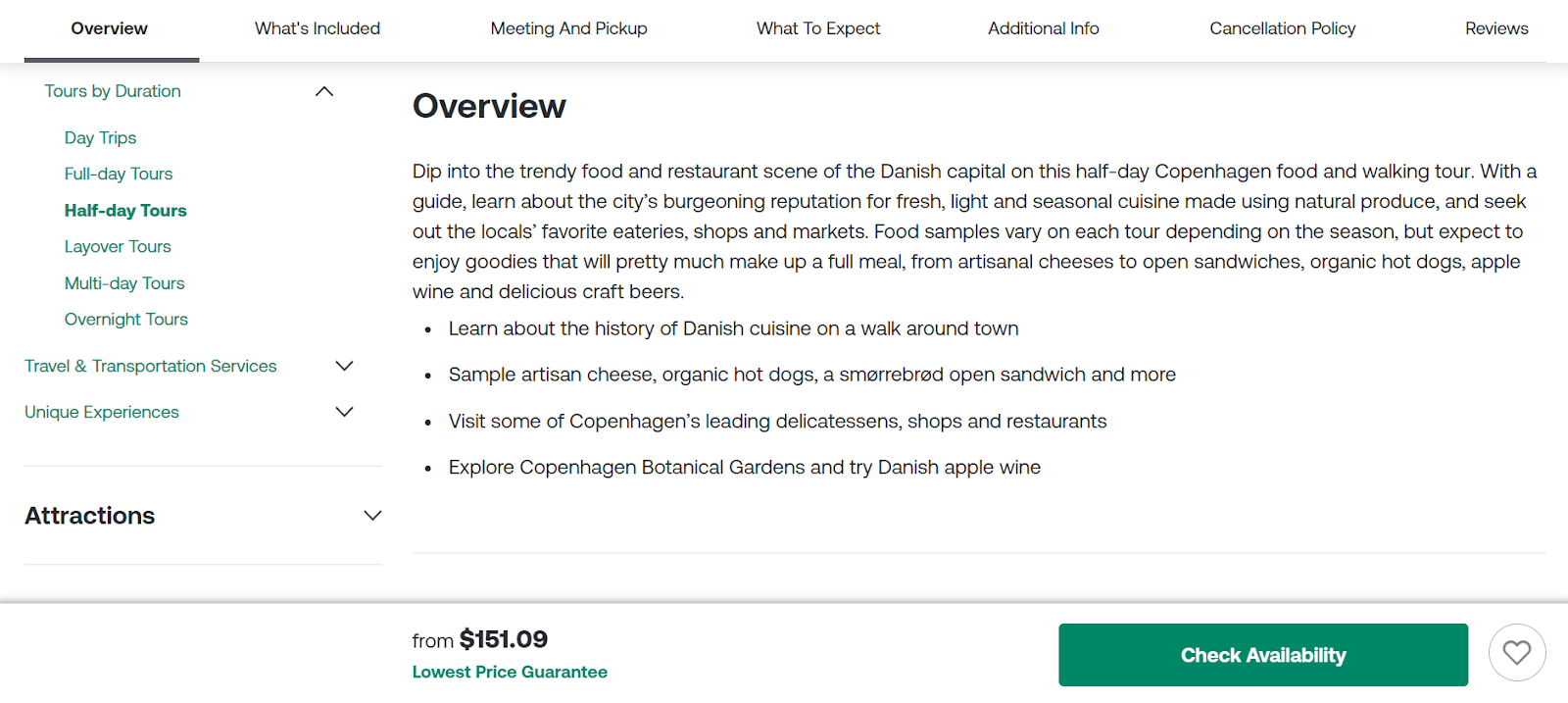
The first step for writing a tour description is to determine the tour’s purpose.
What are the tour’s key features? What makes it unique? What are the main benefits and value propositions of the tour? Why should someone choose your tour over other options? These are some of the questions you must answer before writing.
By defining the tour’s purpose, you can focus on the most relevant and appealing aspects of your tour and avoid unnecessary or boring details.
You will also be able to decide on the target audience for your tour. Who are you writing for? What are their needs, preferences, and expectations? What are their pain points and desires? Knowing your target audience, you can tailor your tour description to their interests and needs and use the right tone and language to connect with them.
Highlight the Tour Itinerary
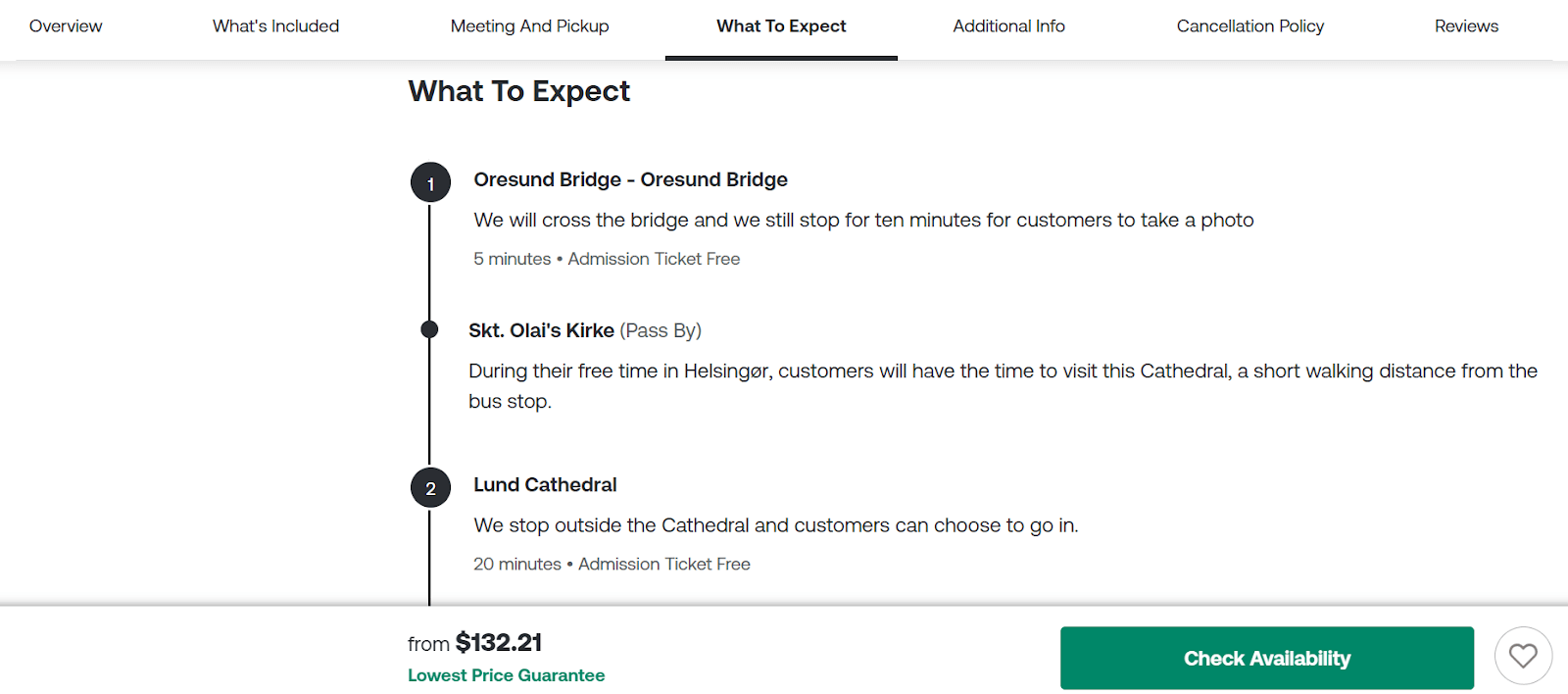
The next step for writing a tour description is highlighting the tour itinerary. This is where you provide an overview of your tour and what your customers can expect. You should list the major stops and attractions included in the tour and provide some brief information about each one.
You should also provide a timeline or schedule for the tour so that your customers can know how long each activity or destination will take. You don’t have to go into too much detail here, as you don’t want to overwhelm or bore your readers with too much information. You just want to give them a glimpse of what they will experience on your tour and spark their curiosity and excitement.
You can also use descriptive words and phrases to make your tour itinerary more vivid and engaging. For example, instead of saying, “Visit the Eiffel Tower”, you can say, “Marvel at the iconic Eiffel Tower and enjoy panoramic views of Paris”. This way, you will create a more emotional connection with your readers and make them imagine themselves on your tour.
Describe the Experience
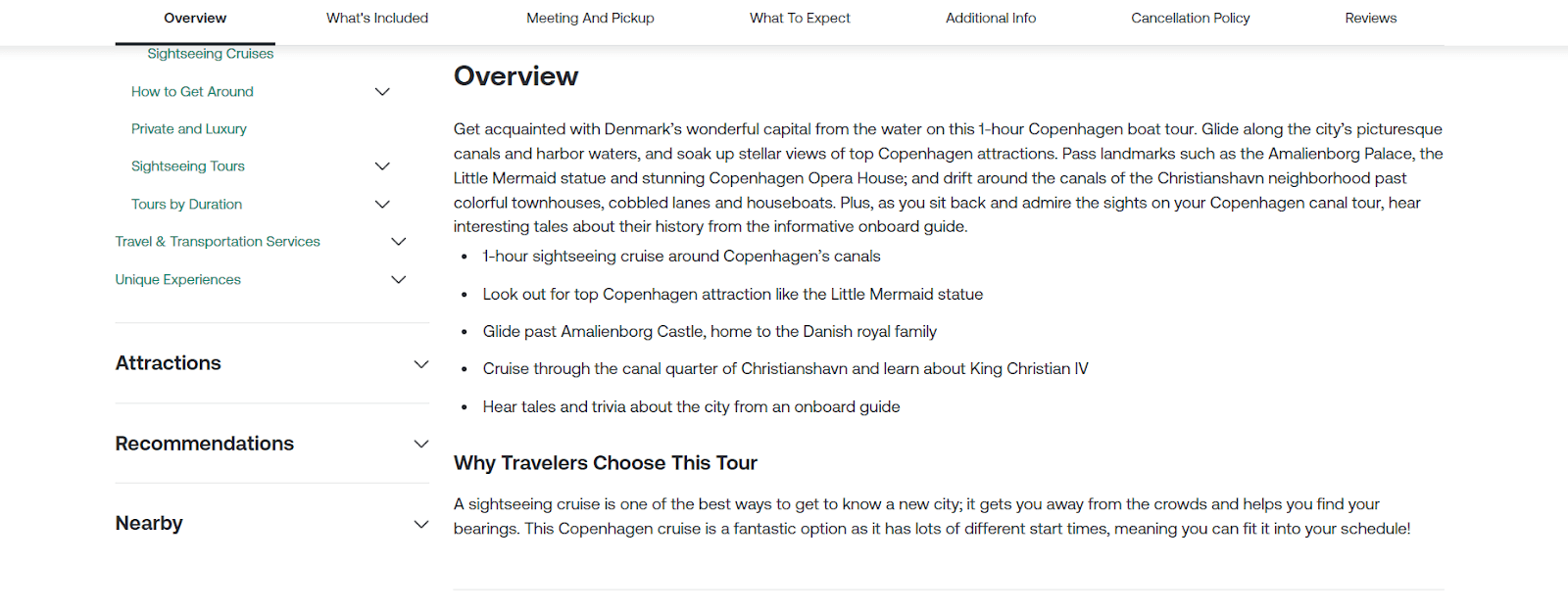
Another step for writing a tour description is to describe the experience of the tour. This is where you use sensory language to describe the tour’s sights, sounds and smells. It will make your readers feel like they are there with you.
You should also include any special activities or experiences unique to your tour . They will show how they will enhance your customers’ enjoyment and satisfaction. For example, suppose your tour includes a wine-tasting session. In that case, you can describe how your customers will savor the flavors and aromas of different wines. And mention learning about the history and culture of wine-making.
By describing the experience of the tour, you will create a more immersive and memorable impression on your readers, and make them want to join your tour.
Share Background and Historical Information
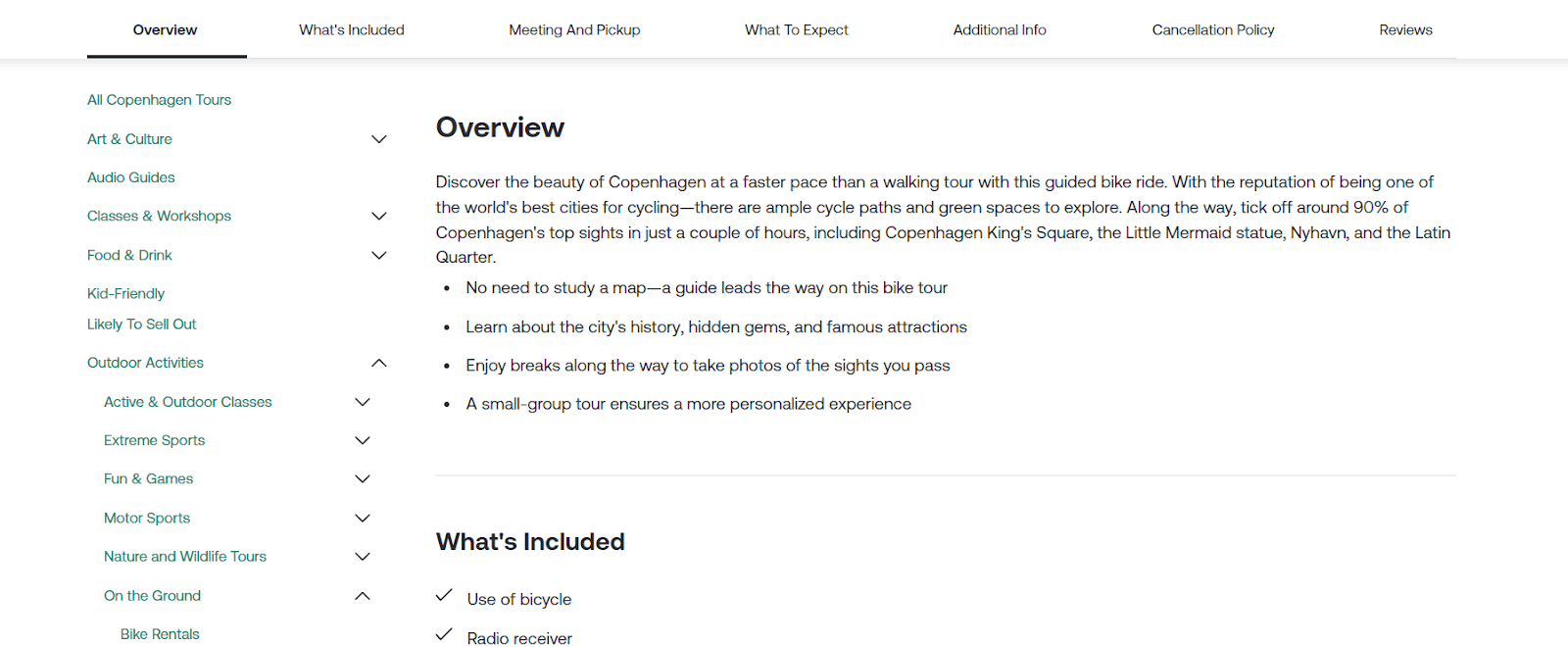
The next step is to share some background and historical information about the destinations visited on the tour. This is where you provide interesting facts or historical background about the places and landmarks you will see on your tour and show how they relate to the theme or purpose of your tour.
You should also use storytelling techniques to engage the reader and make the tour come alive. For example, if your tour is about the French Revolution, you can tell stories about the events and people that shaped the history of France, and how they influenced the architecture and culture of Paris.
By sharing background and historical information, you will add more depth and context to your tour description, making it more informative and educational for your readers.
Use Attention-Grabbing Headlines and Bullet Points
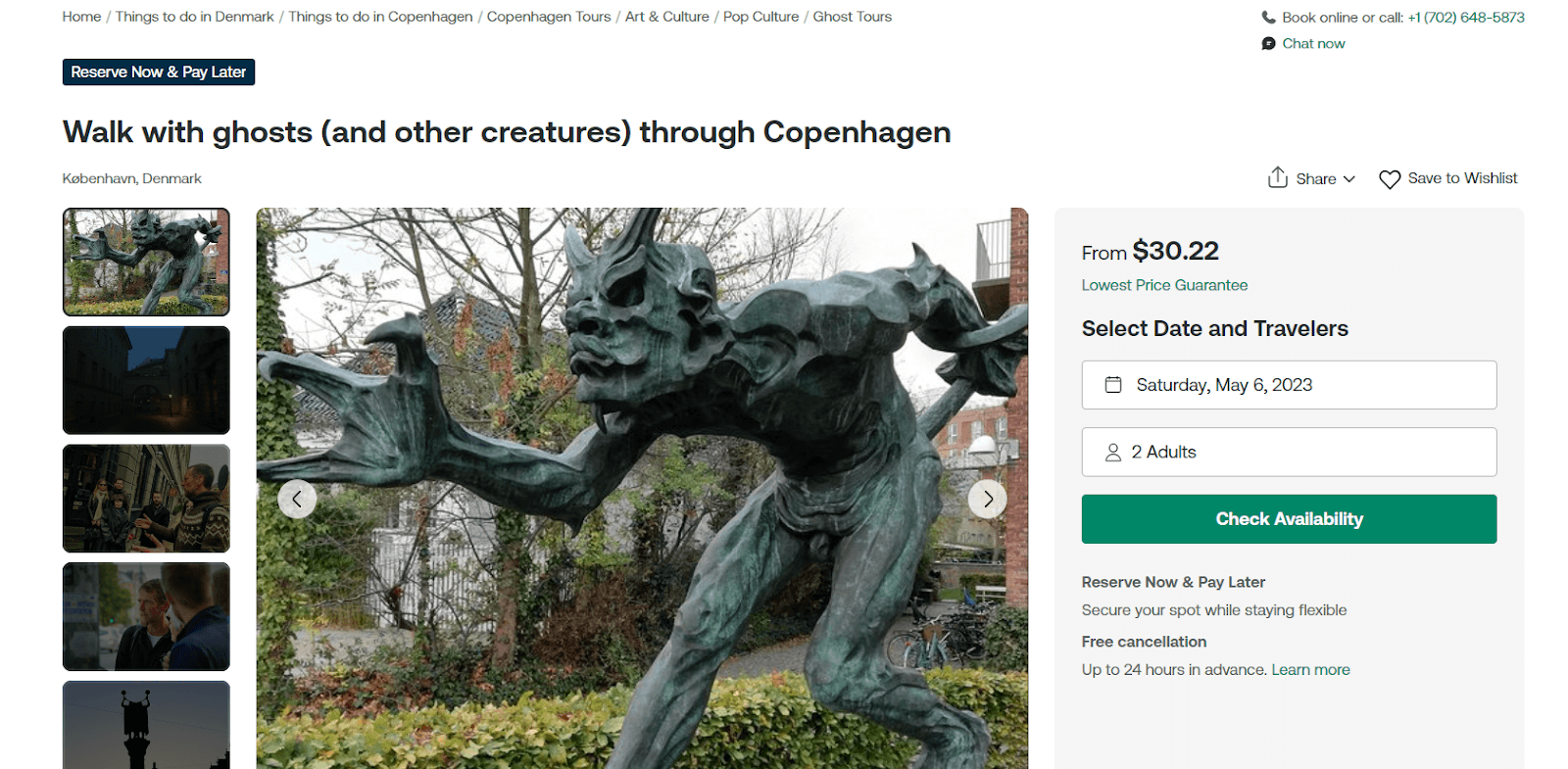
One of the most important steps for writing a tour description is to use attention-grabbing headlines and subheadings to break up the text and make it easier to read. Use headlines and subheadings that capture the main idea or benefit of each section, and make the reader curious and interested to read more.
You should also use bullet points to highlight your tour’s important features or selling points, and make them stand out from the rest of the text. Bullet points are a great way to summarize your tour’s key information and benefits. They will make them more visible and memorable for your readers. For example, you can use bullet points to list your tour’s main attractions, activities, or inclusions and show why they are worth booking.
Add Photos and Videos
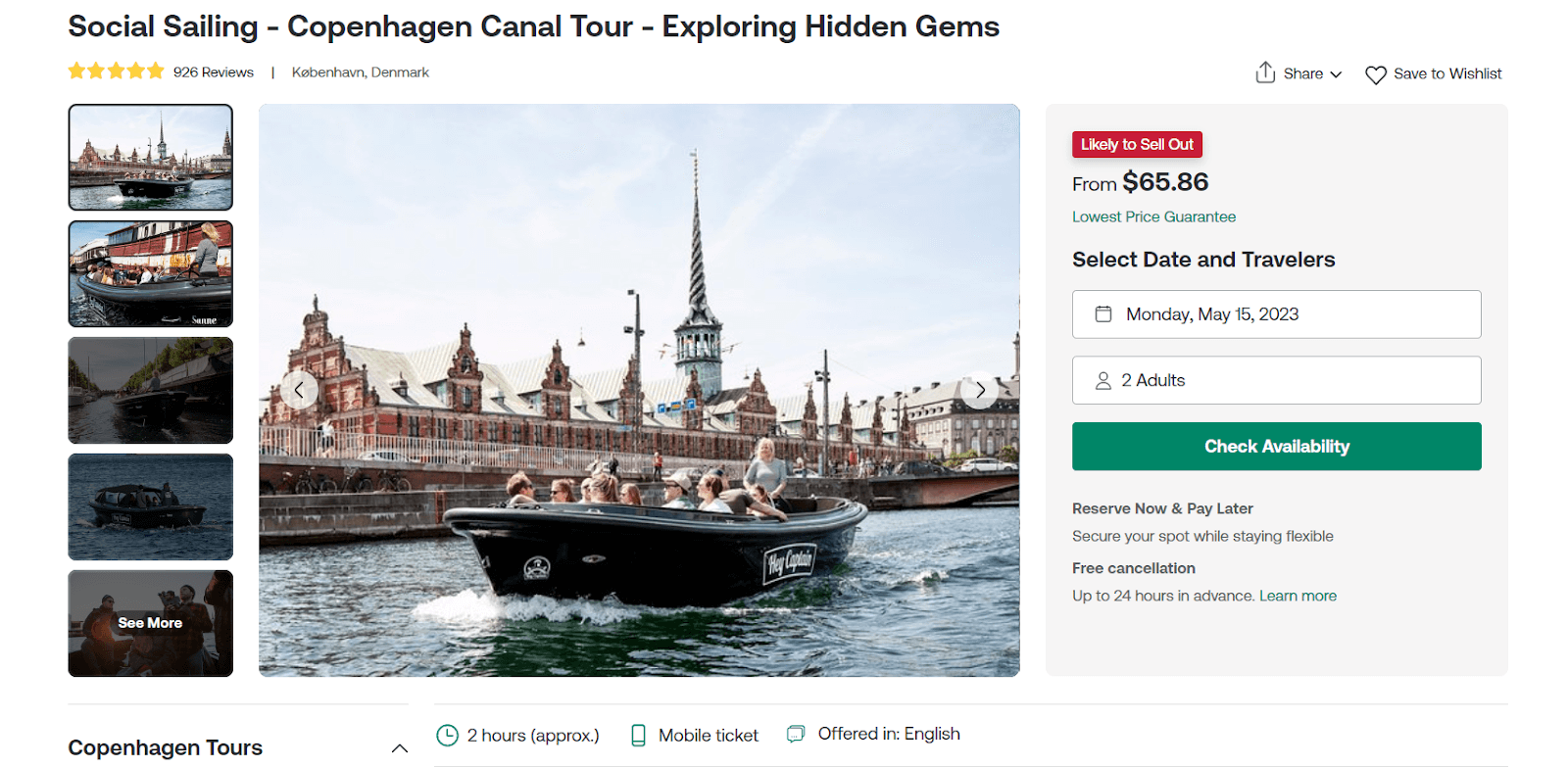
The final crucial step for writing a tour description is to add high-quality photos and videos of the tour destinations and activities . Photos and videos help complement your written descriptions. They will give the reader a better sense of what to expect. They can also help you showcase the beauty and diversity of your tour locations and create a more emotional appeal for your readers.
You should use photos and videos that are relevant, clear, and attractive and that match the tone and style of your tour description. You should also use captions or descriptions to explain what the photos and videos show and how they relate to your tour. Adding photos and videos will make your tour description more visual and engaging and increase your chances of converting your readers into customers.
Are you ready to take your travel website to the next level? Harness the power of SEO and captivate your audience with compelling tour descriptions. Unlock the secrets of effective copywriting and drive more traffic to your website. With the “how to write the tour description” guide, tailored specifically for the TravelerWP WordPress travel theme , you’ll discover expert techniques to optimize your tour descriptions for search engines and entice potential customers.
Don’t miss out on this opportunity to boost your online presence and maximize your bookings. Get your copy now and start crafting irresistible tour descriptions that will make your travel business soar!
Example Tour Description
To help you understand how to write a tour description better, here is an example tour description from Paris City Vision, a leading tour operator in France. The tour description is for a 1-day Big Bus Paris hop-on hop-off tour , allowing you to explore Paris at your own pace and see the city’s main attractions. (For more detail, please open the link to read the full description.)
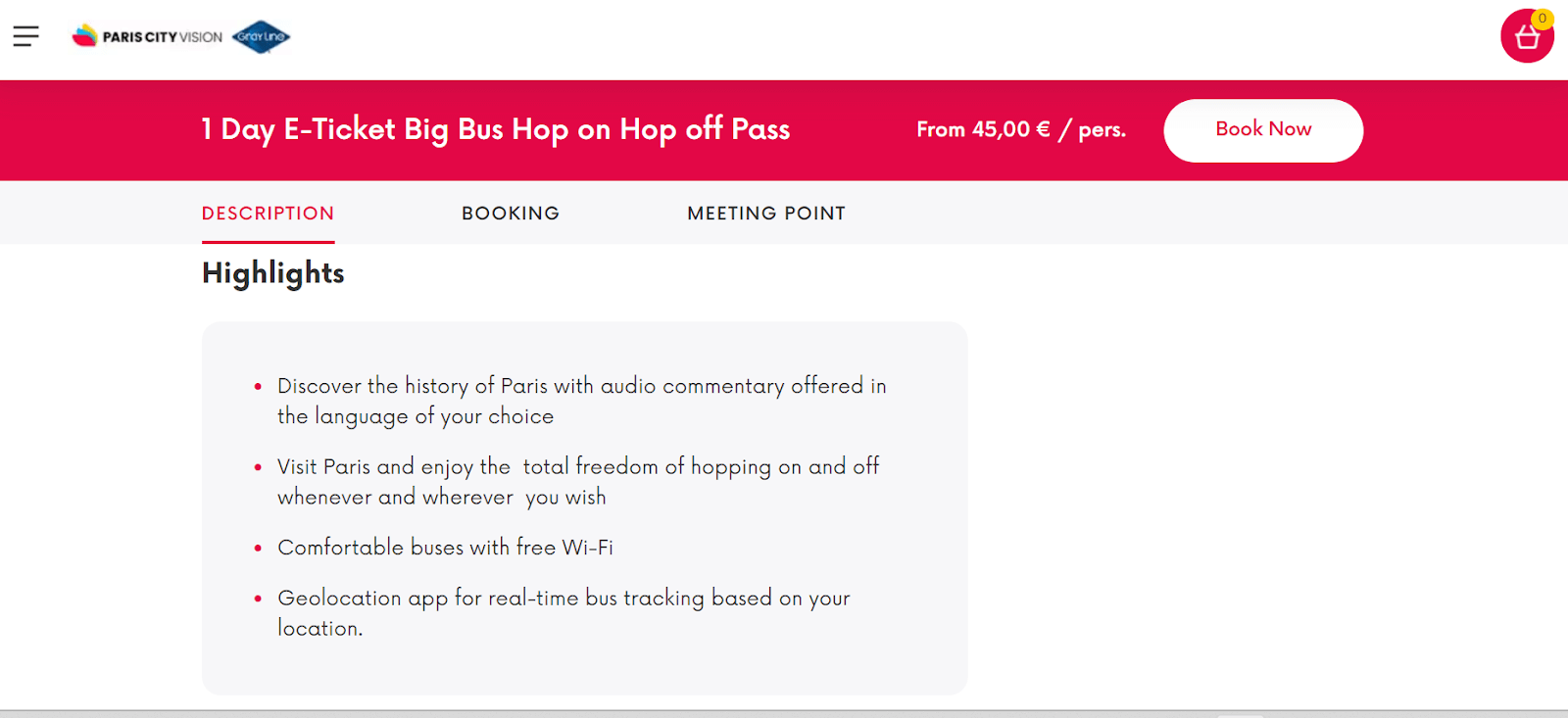
The tour description for the Big Bus Paris 1-day tour is a good example of how to write a tour description that is clear, concise, and informative. It does a great job of using attention-grabbing headlines and bullet points to break up the text. It also highlights the main features and benefits of the tour.
Plus, it has photos and videos of the tour destinations and activities, which make the tour description more visual and engaging. This will give the reader a better sense of what to expect.
However, there are some areas where the tour description could be improved:
1. For example, it could determine the tour’s purpose and decide on the target audience. This would help the tour description to focus on the most relevant and appealing aspects of the tour and use the right tone and language to connect with the reader.
For instance, if the target audience is young travelers who are looking for a fun and flexible way to explore Paris, the tour description could use a more casual and enthusiastic tone. In this case, it should emphasize how the hop-on hop-off tour allows them to customize their itinerary and see the sights they want to see.
2. It could also describe the tour experience and share some background and historical information about the destinations visited on the tour. This would make the tour description more vivid and engaging and create a more emotional appeal for the reader.
For example, it could use sensory language to describe Paris’s sights, sounds, and smells and include interesting facts or stories about the places and landmarks they will see on tour.
3. It could also add a call to action at the end of the tour description, encouraging the reader to book the tour.
For example, it could say, “Don’t miss this opportunity to discover Paris at your own pace and according to your schedule. Book your Big Bus Paris 1-day tour now and prepare for an unforgettable adventure!”
Tour descriptions are powerful instruments to persuade potential tour customers. In this article, we hope you learned how to write effective tour descriptions that attract and convert your readers.
We instructed you on determining your tour’s purpose and target audience, highlighting the tour itinerary, describing the experience, sharing the background and historical information, using attention-grabbing headlines and bullet points, and adding photos and videos. You also saw an example tour description that applied these steps, and an analysis of how it could be improved.
By following these steps, you can write tour descriptions that sell, and boost your conversions and sales. Thank you for reading this article, and happy writing!

Unleash The Full Potential of Your Travel Agency Website with Traveler
- NEW VERSION 3.1.1 – Upsell and Trust Badges For Partner by traveler 16/11/2023
- How to Increase Bookings for Your B&B? by traveler 13/09/2023
- NEW VERSION 3.1.0 – New Update Solo Tour Demo, Mega Menu, Upsell Power and Trust Badges by traveler 11/09/2023
- How To Optimize Blog Content for Your Bed & Breakfast Business? by traveler 10/09/2023
- Top 5 Ways to Advertise Your Bed and Breakfast Business by traveler 10/09/2023
Related Posts
How to increase bookings for your b&b, how to optimize blog content for your bed & breakfast business, top 5 ways to advertise your bed and breakfast business.
- Privacy Policy
- Support Policy
- Refund policy
- Term and Conditions
Traveler design by ShineCommerce © All rights reserved
Space elevators could get us to Mars in record time — and Japan is planning one for 2050
- A space elevator could make it much cheaper and faster to get goods to other planets, like Mars.
- The Obayashi Corporation based in Japan announced in 2012 plans to begin building one by next year.
- Not only would it cost $100 billion, there are huge technological and organizational challenges.

Imagine a long tether linking Earth to space that could launch us to orbit at a fraction of the cost and slingshot us to other worlds at record speed.
That's the basic idea behind a space elevator .
Instead of taking six to eight months to reach Mars, scientists have estimated a space elevator could get us there in three to four months or even as quickly as 40 days .
The concept of space elevators isn't new, but engineering such a structure would be no easy feat , and many other issues besides technology stand in the way.
That's why the ambition to seriously build one is fairly recent.
The Japan-based company Obayashi Corporation thinks it has the expertise.
Japan aims to build a space elevator by 2050
Known for constructing the world's tallest tower, the Tokyo Skytree , Obayashi Corporation announced in 2012 that it would reach even loftier heights with its own space elevator.
In a report that same year, the company said it would begin construction on the $100-billion project by 2025 and could start operations as early as 2050.
We checked in with Yoji Ishikawa, who wrote the report and is part of the company's future technology creation department, to see how the project is progressing ahead of 2025.
While Ishikawa said the company likely won't start construction next year, it is currently "engaged in research and development, rough design, partnership building, and promotion," he told Business Insider.
Some have doubted such a structure is even possible.
"It's been sort of a kooky idea," said Christian Johnson, who published a report on space elevators last year in the peer-reviewed Journal of Science Policy & Governance.
"That said, there are some people who are real scientists who are really on board with this and really want to make it happen," Johnson said.
A cheaper route to space
Launching humans and objects into space on rockets is extremely expensive. For example, NASA has estimated its four Artemis moon missions will cost $4.1 billion per launch .
The reason is something called the rocket equation . It takes a lot of fuel to get to space, but the fuel is heavy, which increases the amount of fuel you need. "And so you see the kind of vicious cycle there," Johnson said.
With a space elevator, you don't need rockets or fuel.
According to some designs, space elevators would shuttle cargo to orbit on electromagnetic vehicles called climbers. These climbers could be remotely powered — like through solar power or microwaves — eliminating the need for on-board fuel.
In his report for the Obayashi Corporation, Ishikawa wrote that this type of space elevator could help drop the cost of moving goods to space to $57 per pound. Other estimates for space elevators in general have put the price at $227 per pound.
Related stories
Even SpaceX's Falcon 9, which, at around $1,227 per pound, is one of the cheaper rockets to launch, is still about five times as expensive as the higher cost estimates for space elevators.
There are other benefits besides cost, too.
There's no danger of a rocket exploding , and the climbers could be zero-emission vehicles, Johnson said. At a relatively leisurely pace of 124 miles per hour, the Obayashi Corporation's climbers would travel slower than rockets with fewer vibrations, which is good for sensitive equipment.
Ishikawa said the Obayashi Corporation sees a space elevator as a new kind of public works project that would benefit all of humankind.
There's not enough steel on Earth to make a space elevator
Right now, one of the biggest obstacles to building a space elevator is what to make the tether or tube from.
To withstand the tremendous tension it would be under, the tube would have to be very thick if it were made out of typical materials, like steel. However, "if you try to build it out of steel, you would need more steel than exists on Earth," Johnson said.
Ishikawa's report suggested Obayashi Corporation might use carbon nanotubes . A nanotube is a rolled-up layer of graphite, the material that's used in pencils.
It's much lighter and is less likely to break under tension compared to steel, so the space elevator could be much smaller, Johnson said. But there's a catch.
While nanotubes are very strong, they're also tiny, a billionth of a meter in diameter. And researchers haven't made them very lengthy. The longest is only about 2 feet.
To be properly balanced while still reaching geosynchronous orbit — where objects stay in sync with Earth's rotation — the tether would need to be at least 22,000 miles long, per Ishikawa's report.
"So we're not there," Johnson said of the nanotube length. "But that doesn't mean it's impossible."
Instead, researchers might need to develop an entirely new material, Ishikawa said.
Other obstacles
Whatever the material turns out to be, there are still other problems.
For instance, a space elevator's tether would be under such incredible tension that it would be prone to snapping, Johnson said. A lightning strike could vaporize it. There's also other weather to consider like tornadoes, monsoons, and hurricanes.
Locating the tether base at the equator would lessen the likelihood of hurricanes , but it would still need to be in the open ocean to make it more difficult for terrorists to target, Johnson said.
It would also take a lot of trips to make up for that giant price tag for construction.
That's only scratching the surface of the challenges. And they can't all be solved by one company, Ishikawa said. "We need partnerships," he said. "We need different industries."
"Of course," Ishikawa said, "raising funds is very essential."
That's a lot of obstacles to overcome to start construction in time for operation by 2050, especially since Ishikawa estimated it would take 25 years to build. He noted that the 2050 estimate always came with caveats about the technology progressing. "It's not our goal or promise," he said, but the company is still aiming for that date.
"I think that those time estimates are optimistic," Johnson said, "even assuming there was a breakthrough tomorrow."
Watch: Why Hot Air Balloons Are So Expensive
- Main content

IMAGES
VIDEO
COMMENTS
Step 1: Executive Summary. Start with an executive summary, which provides a snapshot of your business. It should include your business name, location, and a brief description of the services you offer. This section should also highlight your unique selling proposition - what sets your tourism business apart from the competition.
Business tourism represents one of the oldest forms of tourism, man having travelled for the purpose of travel since very early times" (cited in Bathia, 2006, p.272). To elaborate, business tourism is a means of travel that takes place for the primarily importance of a work-related activity. Often the term 'business tourism' is described ...
Even if you're creating your business plan for internal use only, conducting market analysis and research is an excellent way to gauge your position within your industry, identify areas of concern, and create an effective marketing strategy using the 7 Ps of Travel and Tourism Marketing. Things to consider in your market analysis include your ...
Tour Operator Business Plan Template. Your tour operator business plan should contain at least seven sections: an executive summary, a company overview, a description of your services, an analysis of your market, an implementation plan, a team summary, and a financial plan. You might have one or more appendices at the end, if you have ...
Corporate travel, which is an important part of international tourism, is expected to reach a global market value of. $2 trillion. by 2028, or nearly three times its 2020 levels. This isn't surprising, given the extraordinary. ROI of business travel. : for every $1 a company spends on travel arrangements, they get back $12.5 in revenue.
How To Start A Tourism Business: Step-By-Step Instructions. 1. Formulate A Plan For Your Business. First, you need to develop a clear business plan. Before setting the entity up, you'll need a concise vision and understanding of what the business will look like and the direction it is going in. Here are some important aspects to cover:
At Business and Plans, we offer a wide range of Tourism business plan templates to cater to your specific needs. Whether you are starting a Hotel, Bed and Breakfast, or Travel Agency, we've got you covered. Our professionally designed templates will save you time and ensure your business is set up for success. Browse through our selection ...
Decide on a travel business niche. Create a business plan. Select a business structure. Obtain business financing or capital. Set up accounting and bookkeeping services. Source specific travel equipment. Register your travel business. 01. Decide on a travel business niche.
Step 2: Take your geographical location into account. Step 3: Size up the competition. Step 4: Write a business plan. Step 5: Procure the necessary funds. Step 6: Select a business location. Step 7: Obtain all applicable business licenses. Step 8: Market your tourism business: Read more on this topic: Definition: Tourists are people who travel ...
A good business plan can help your business secure finance, define the direction of your business, and create strategies to achieve your goals. A thorough and effective tourism business plan will include an executive summary, a business description, short and long term goals, business structure (legal and internal management structure), product or service description, a sales and marketing ...
In addition, highlight any milestones you have accomplished, such as the number of clients served, positive reviews, new travel agency openings, etc. 4. Conduct an Industry and Market Analysis. An industry and market analysis section is one of the most important ones in your travel agent business plan.
Industry Analysis. The U.S. travel agency industry is valued at $48.5B with more than 90,600 businesses in operation and over 318,600 employees nationwide. Factors currently driving industry growth include an increase in domestic tourism and travel for overnight trips, vacations, and business purposes.
P25,365. P20,958. P10,959. Cash at End of Period. P25,365. P46,323. P57,282. Download This Plan. Explore a real-world travel tour agency business plan example and download a free template with this information to start writing your own business plan.
Simply adding a quick blurb like "9 out of 10 customers rated their experience as outstanding" can make your tour description a lot more compelling. 7. Use Video And Images. Writing tour descriptions is important, but optimizing your tour booking pages with videos and images can be a game changer.
What is the tourism industry? What is a tourist? What are the benefits of tourism? And what are all the sectors within the tourism Industry?
Travel Tour Agency Business Plan. 1. Executive Summary. The tourism industry has undergone rapid growth of unsurpassed nature over the last several decades. This has mainly been due to the advent of a 'borderless' world and increased information dissemination about the majestic sceneries throughout the world, with the southern African ...
13. Set-jetting. If you've ever wanted to visit the set of your favourite movie or TV show, you're not alone. A top travel trend for 2023 that is continuing in 2024 is "set-jetting," when travelers visit destinations primarily because they were featured in a popular movie, TV show, or book.
Business tourism or business travel is a more limited and focused subset of regular tourism. [1] [2] During business tourism (traveling), individuals are still working and being paid, but are doing so away from both their workplace and home. [2] Some definitions of tourism exclude business travel. [3] However, the United Nations World Tourism ...
1.1 Objectives. Adventure Excursions Unlimited's objectives for the first three years of operation include: To create a service-based company whose #1 mission is exceeding customers' expectations. Capturing 25% market share of the high-end hard-adventure travel space. To develop a sustainable, profitable business.
Highlight the Tour Itinerary. The next step for writing a tour description is highlighting the tour itinerary. This is where you provide an overview of your tour and what your customers can expect. You should list the major stops and attractions included in the tour and provide some brief information about each one.
Here's how to write one that works for your business. 1. Start with your basics. The goal of a business description is to introduce any reader to your company—-and to do that quickly. So when you're getting started writing this description, it's a good idea to list out the basic information that you'll need to include.
tourism, the act and process of spending time away from home in pursuit of recreation, relaxation, and pleasure, while making use of the commercial provision of services.As such, tourism is a product of modern social arrangements, beginning in western Europe in the 17th century, although it has antecedents in Classical antiquity.. Tourism is distinguished from exploration in that tourists ...
Travel Agent job description. A Travel Agent is a vacation planner who assists clients in finding their ideal destinations, matching them with suitable vacation spots, and providing a list of activities to enhance their travel experience. ... Travel, Tourism, Business or relevant field; Personal travel experience will be considered an advantage ...
Space elevators could get us to Mars in record time — and Japan is planning one for 2050. Jenny McGrath. Jun 5, 2024, 10:43 AM PDT. The Obayashi Corporation's concept drawing for its proposed ...